
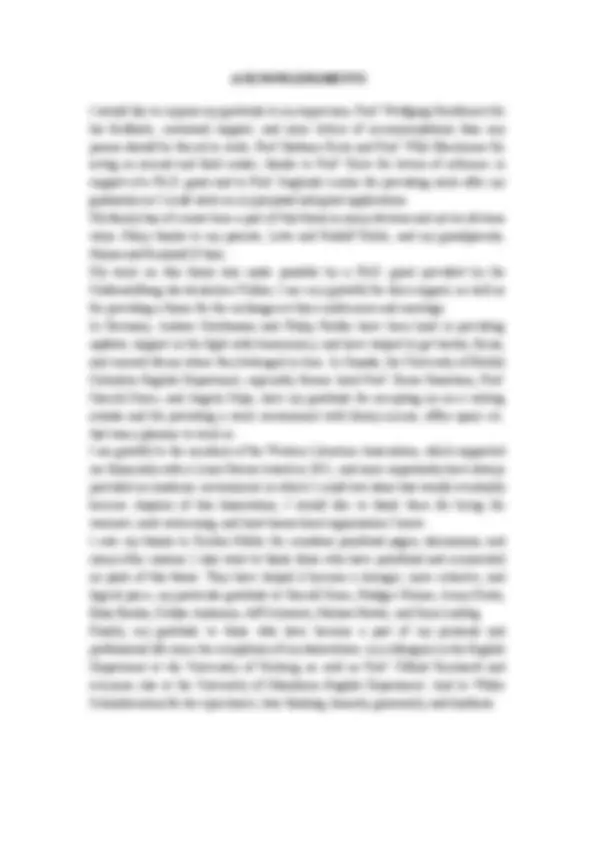

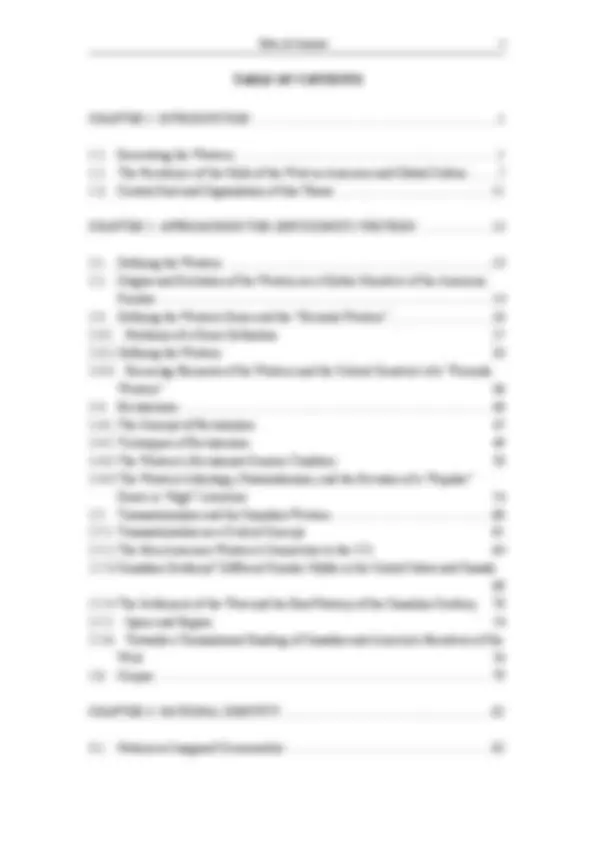

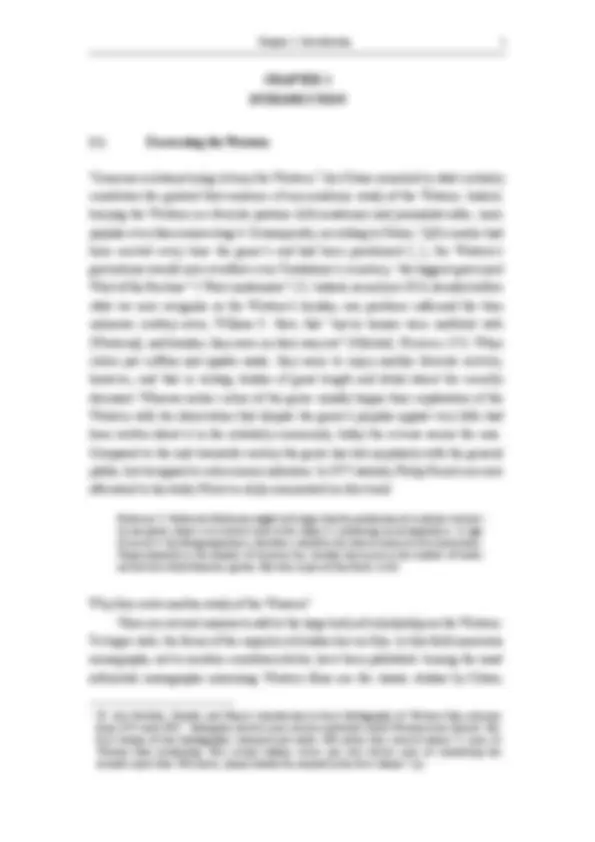
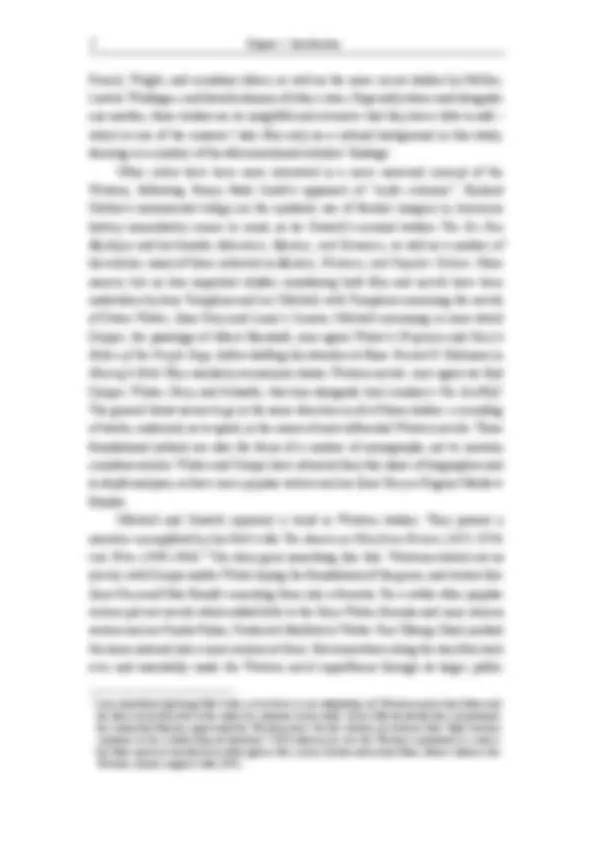
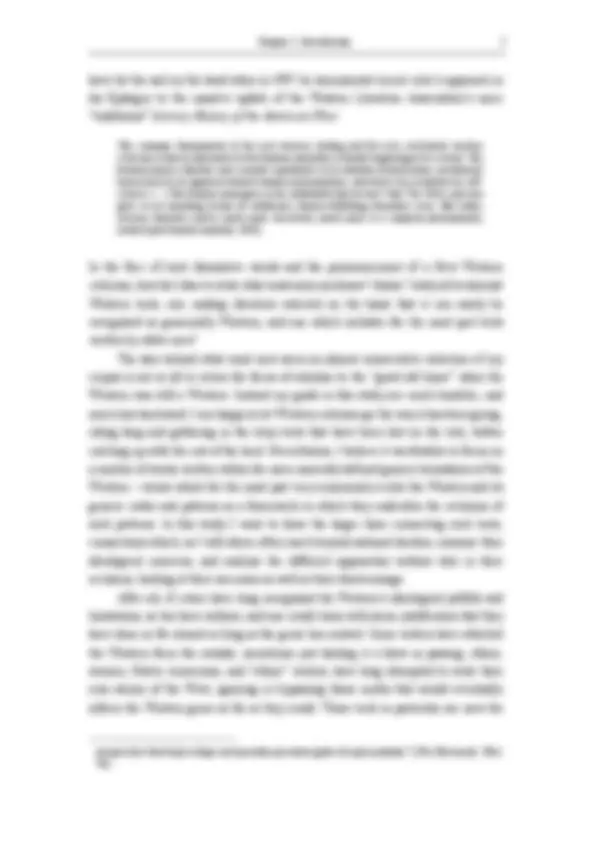
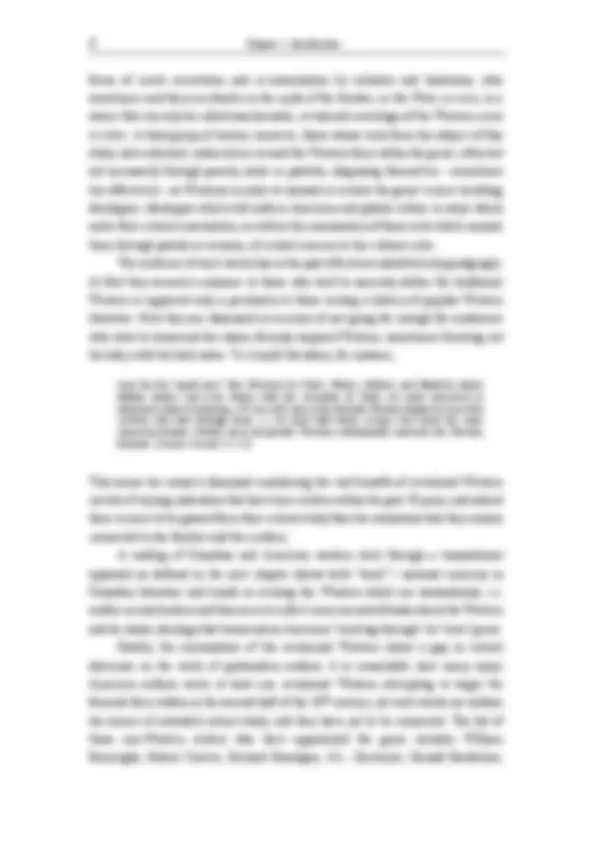
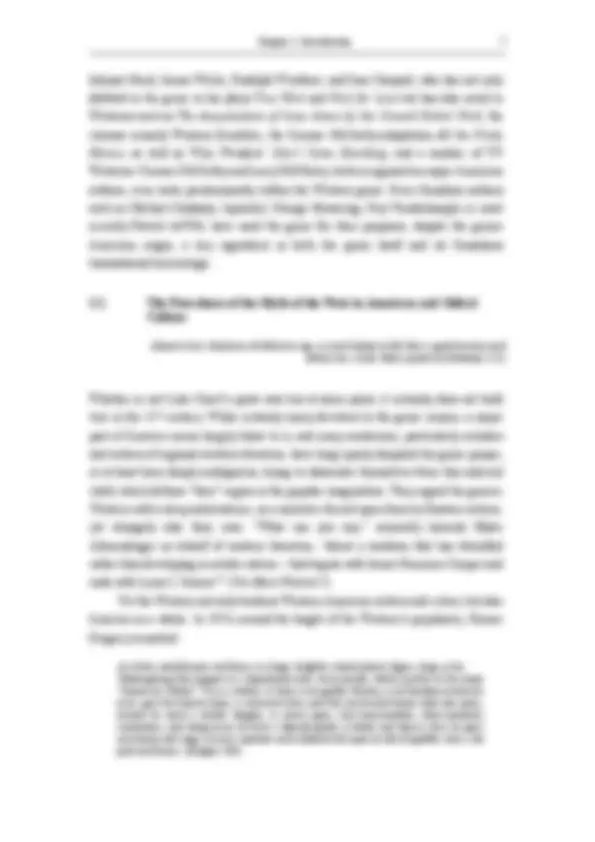
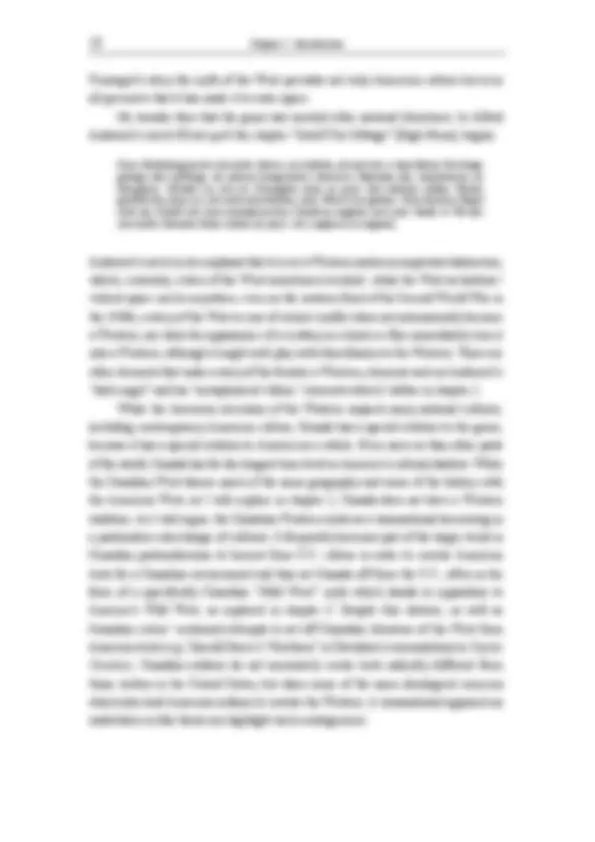
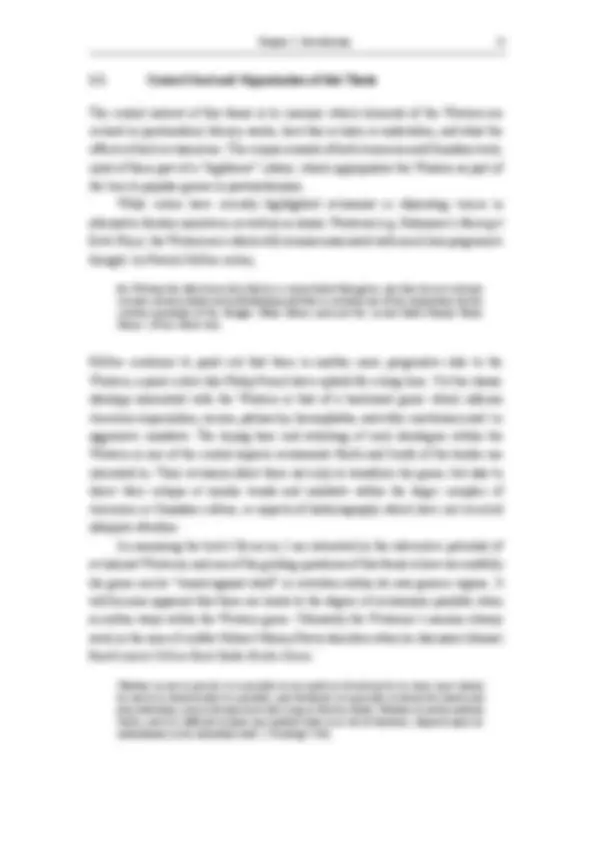
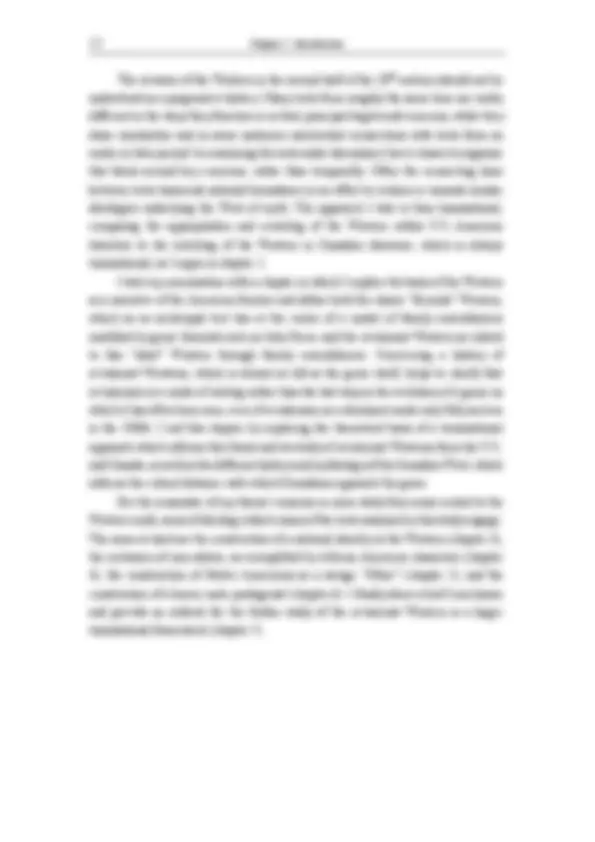
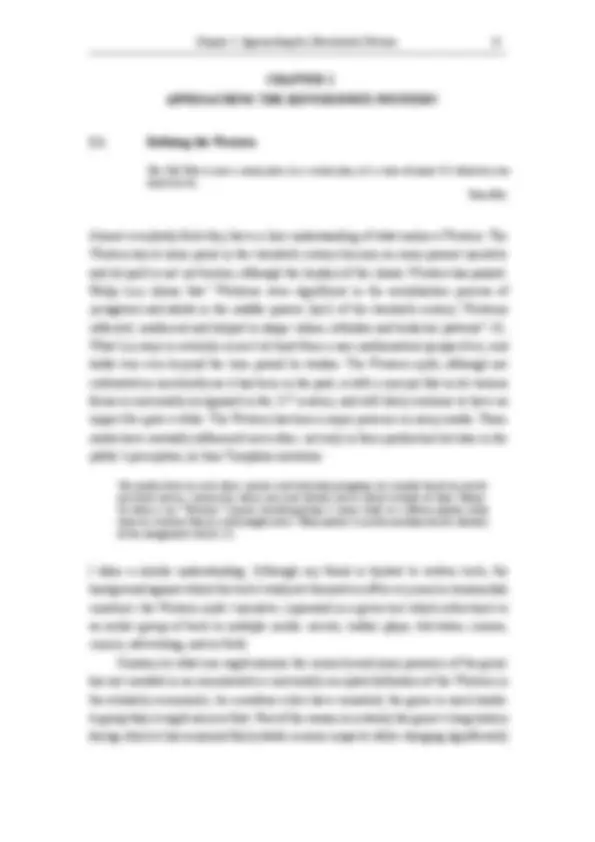

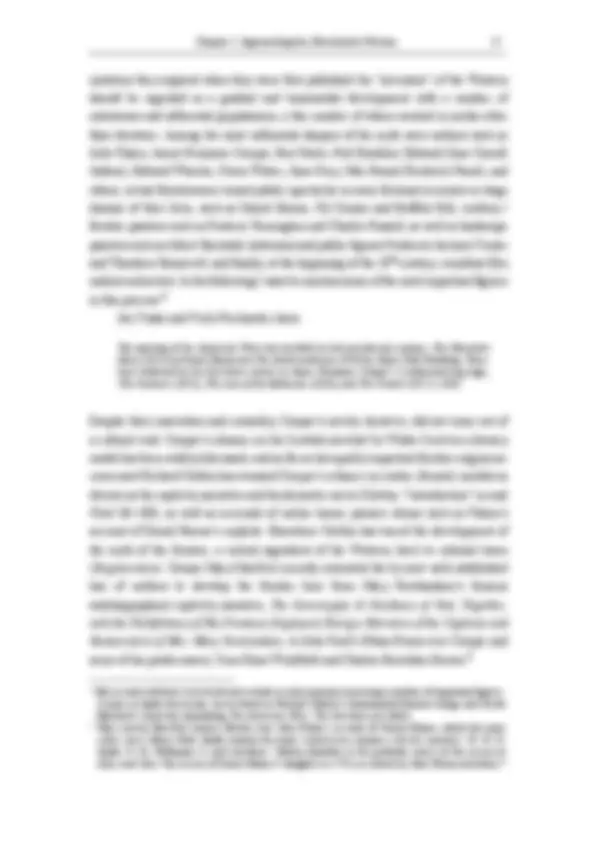
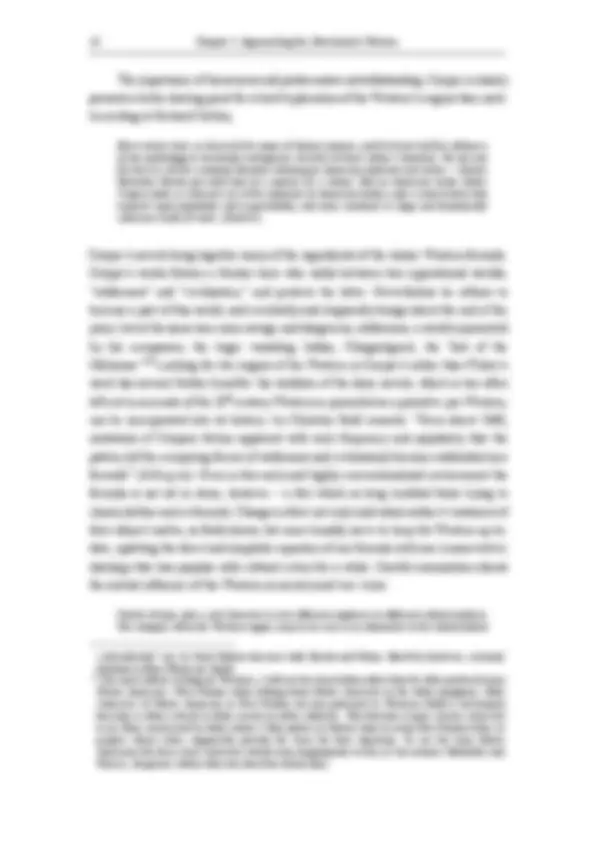
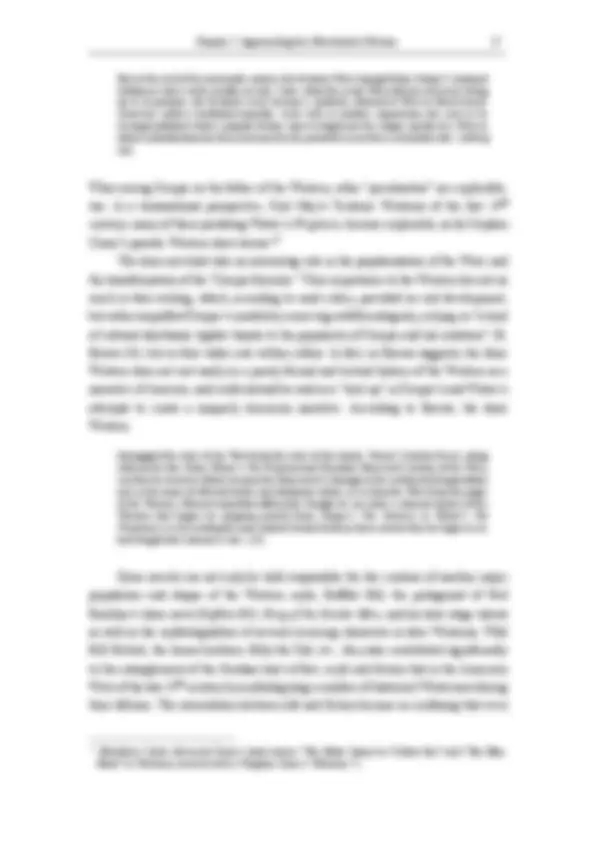
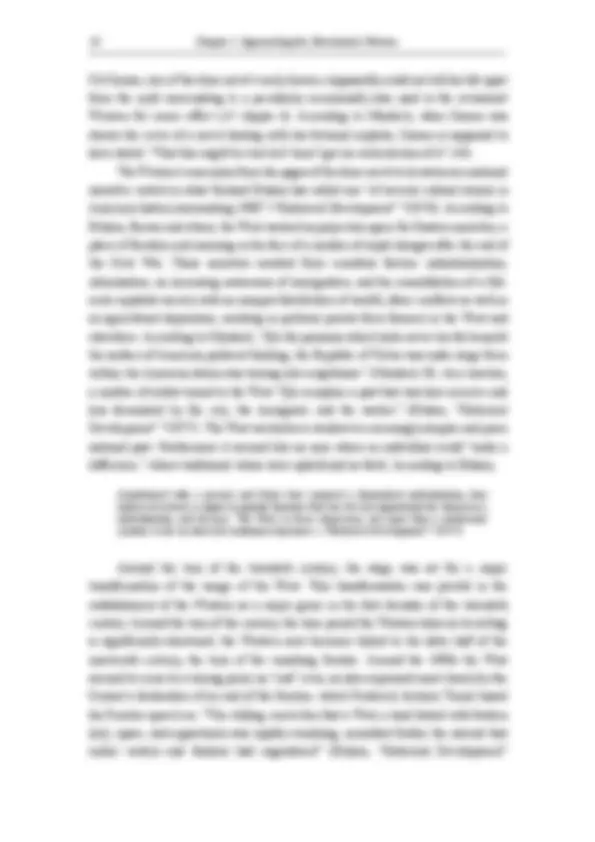
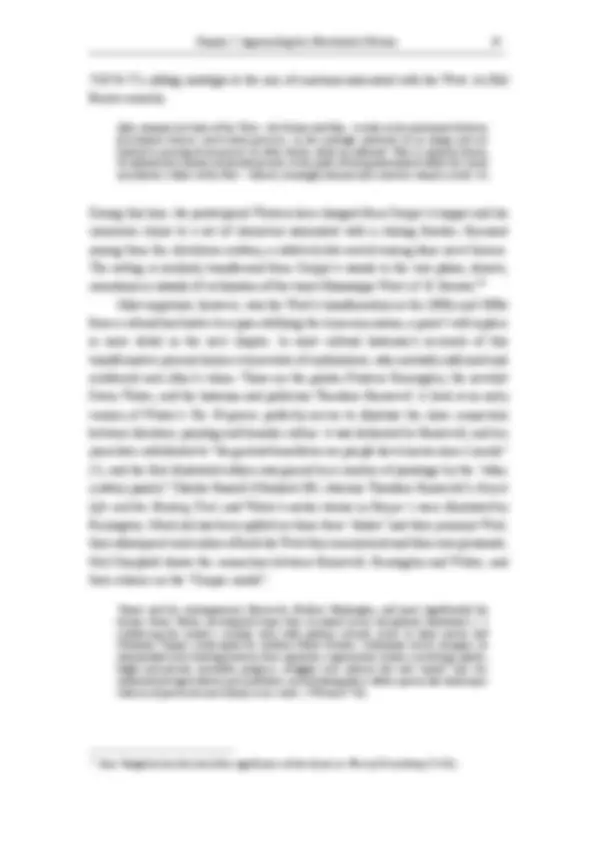
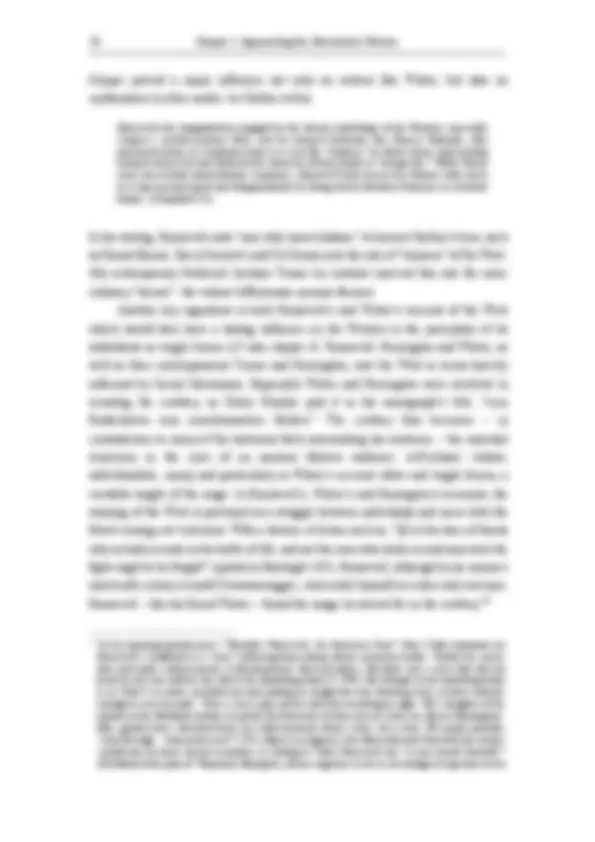
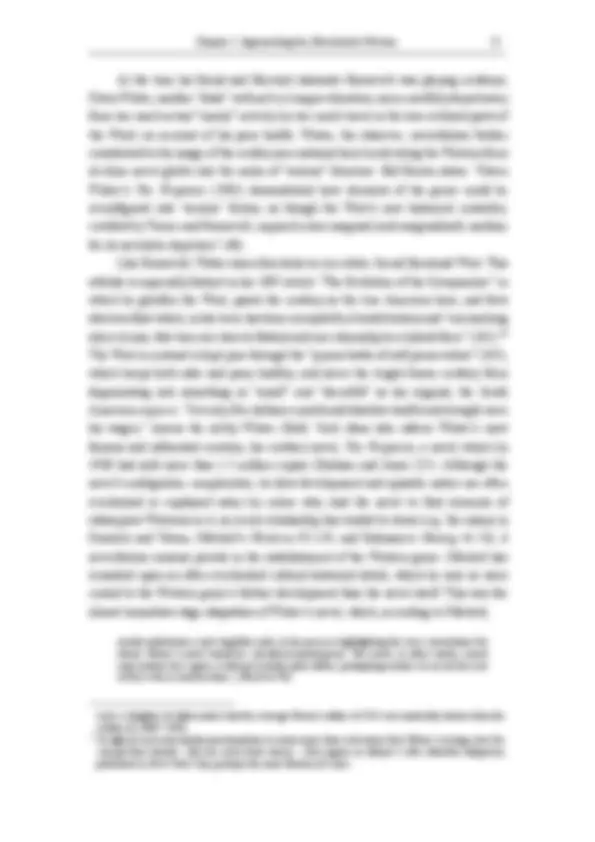
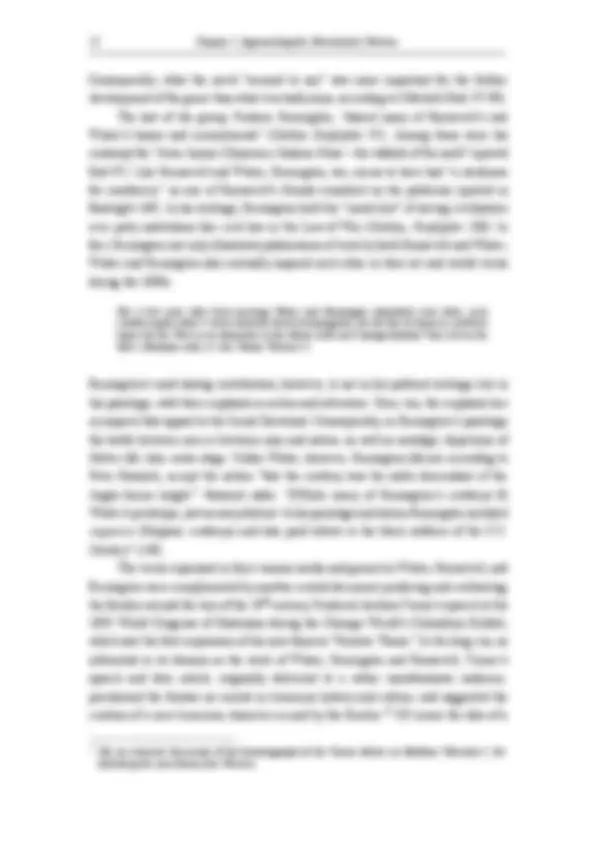
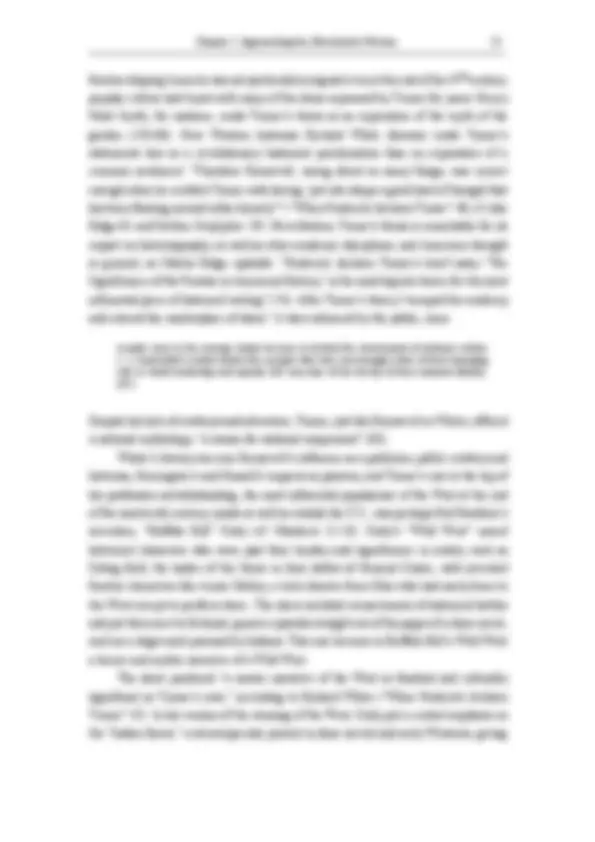
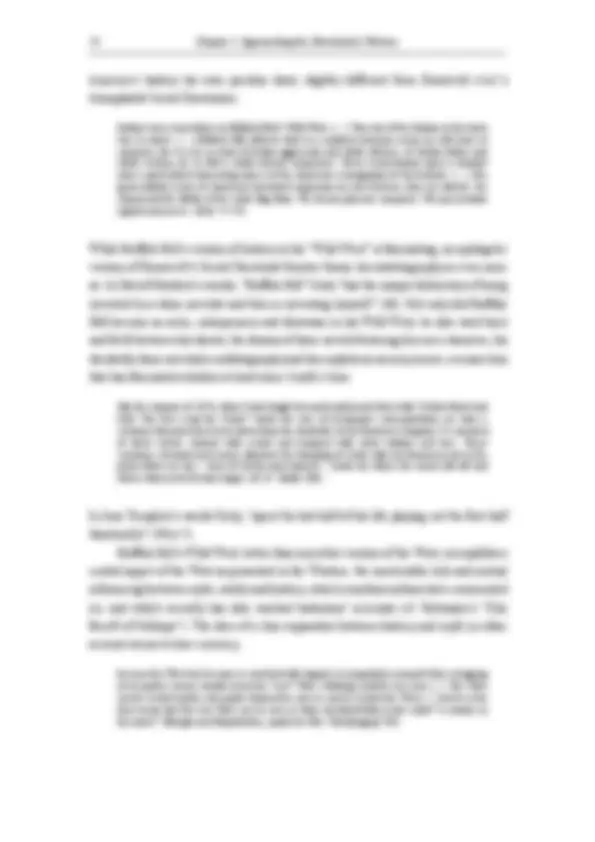
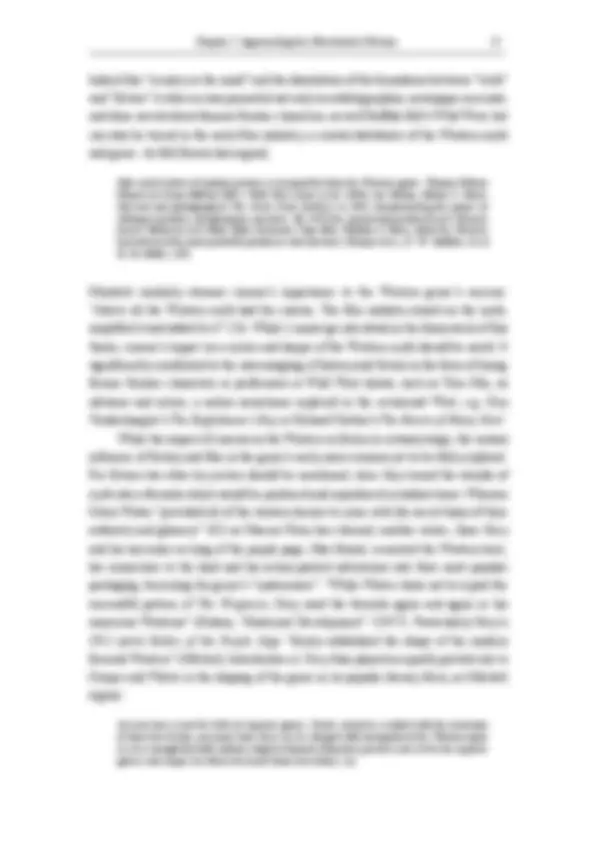
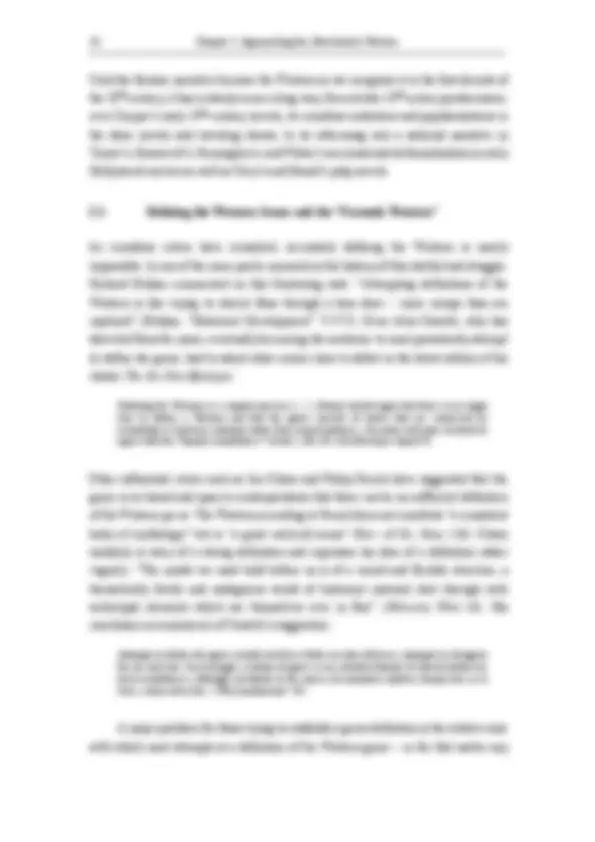
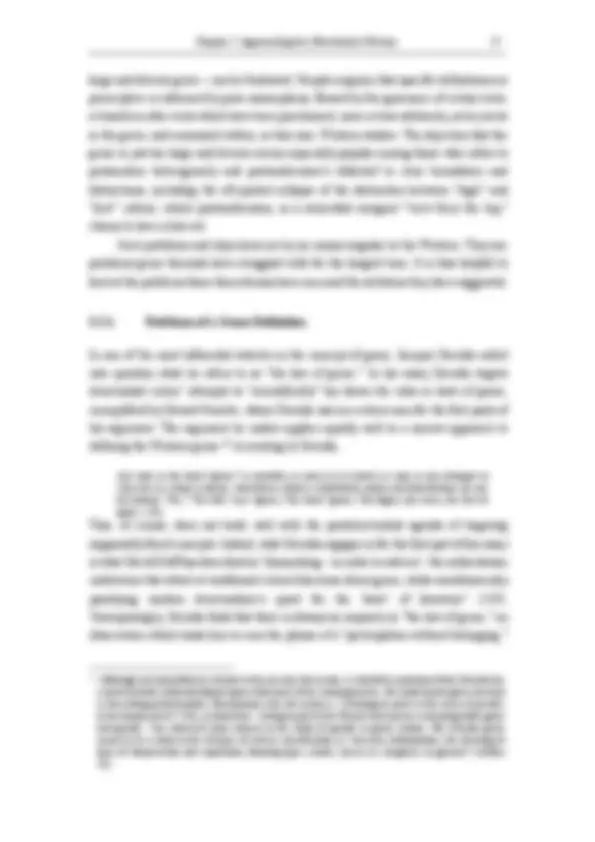
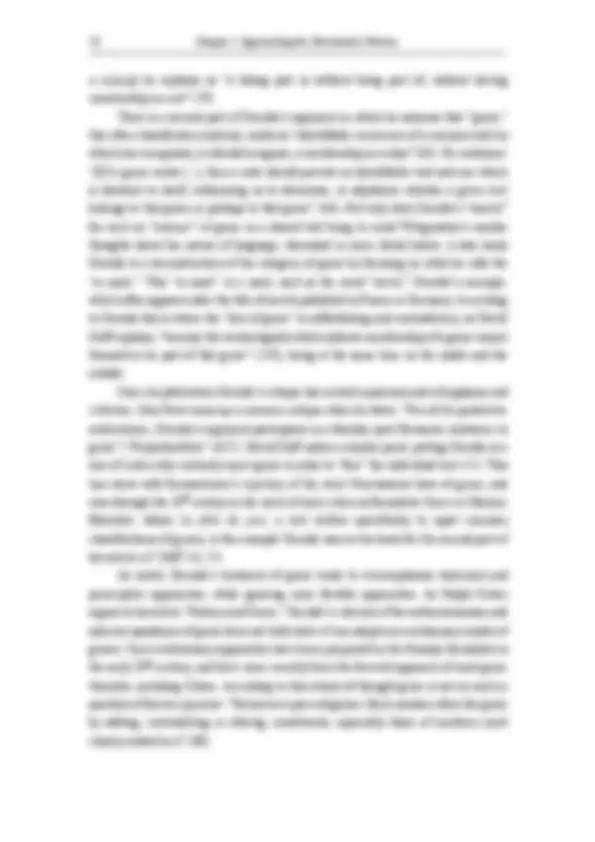
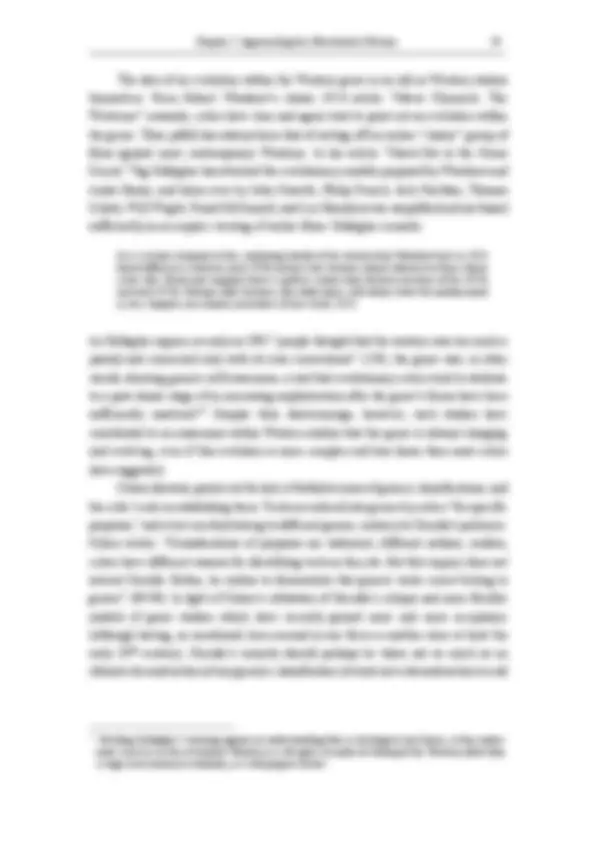
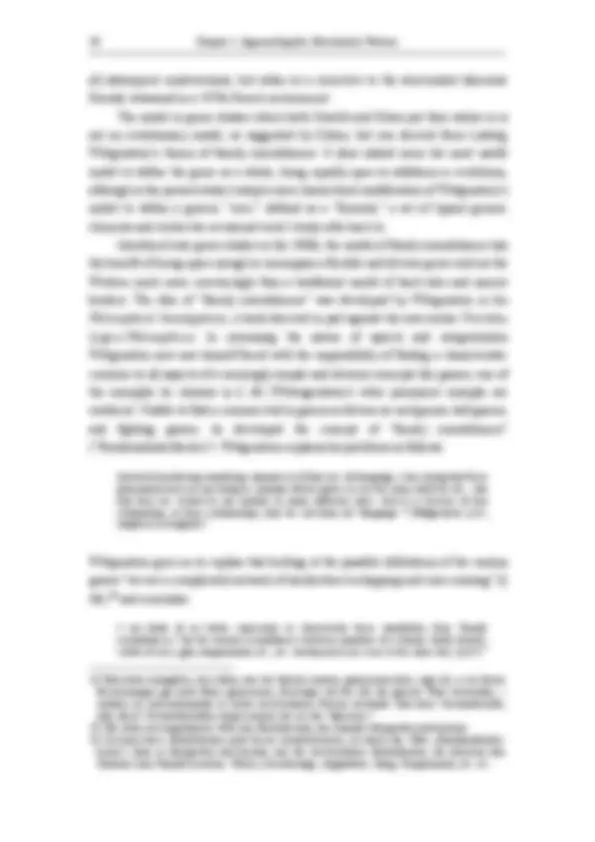
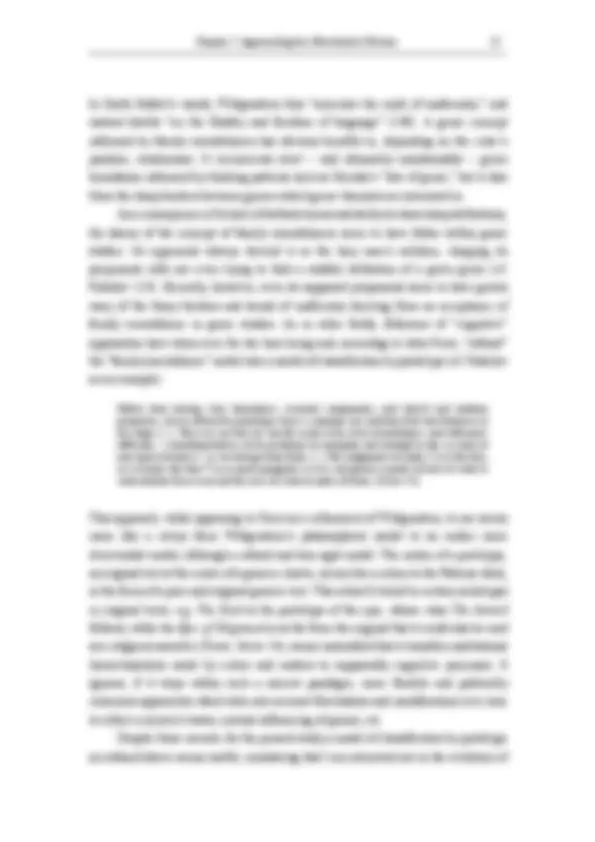
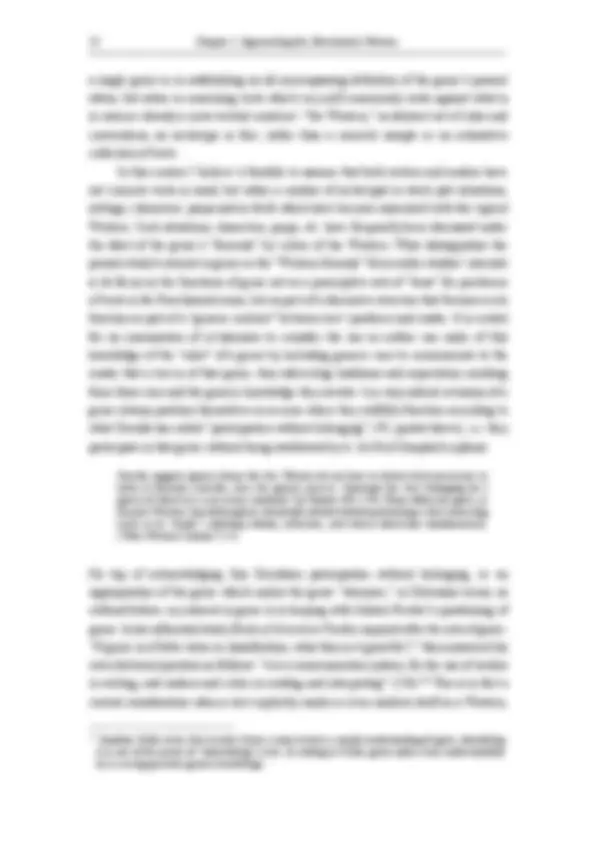
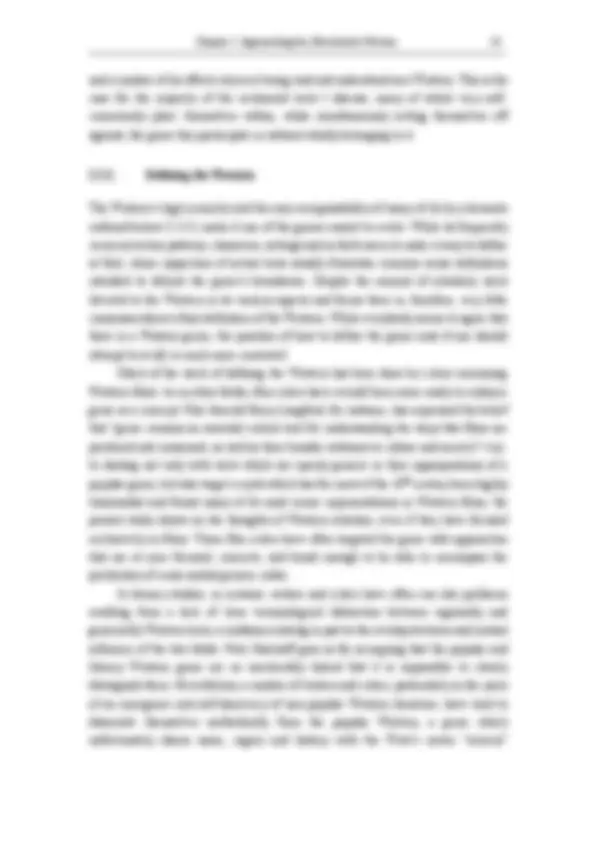
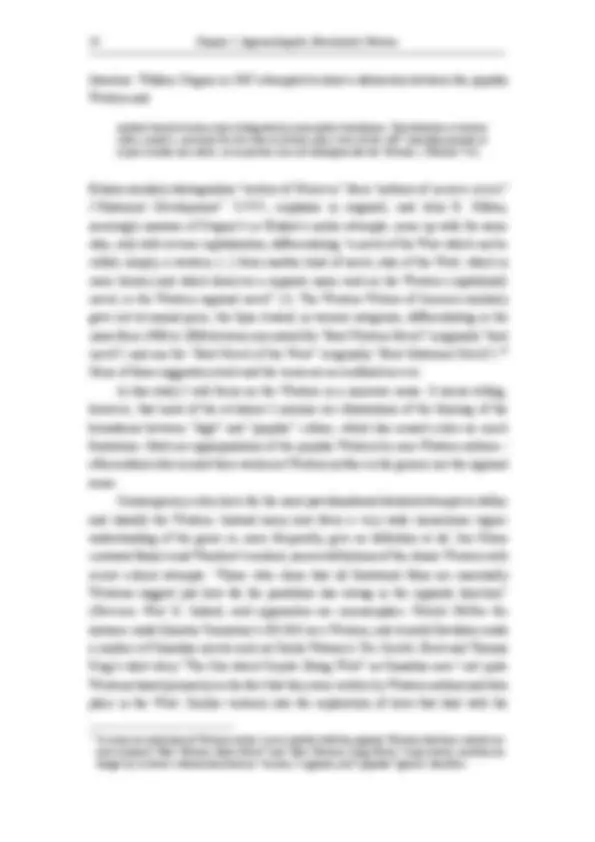


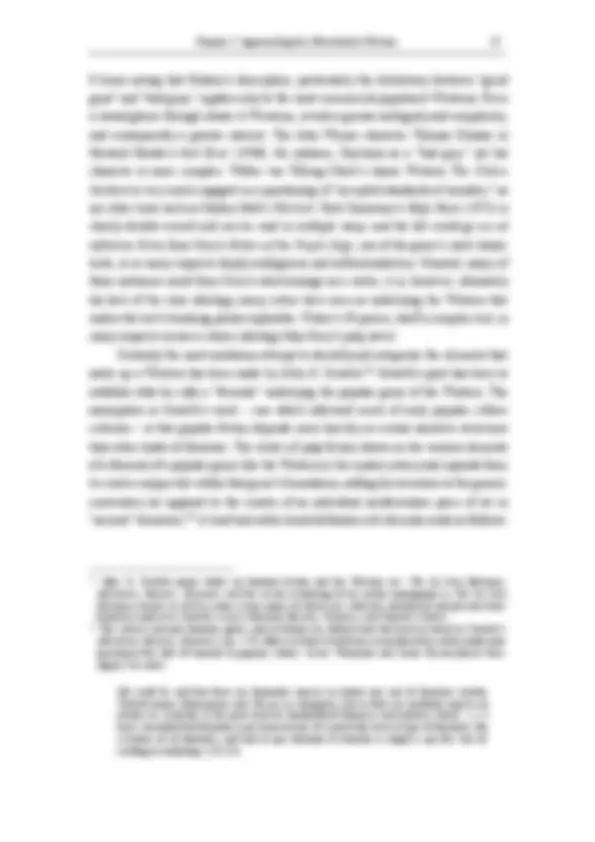
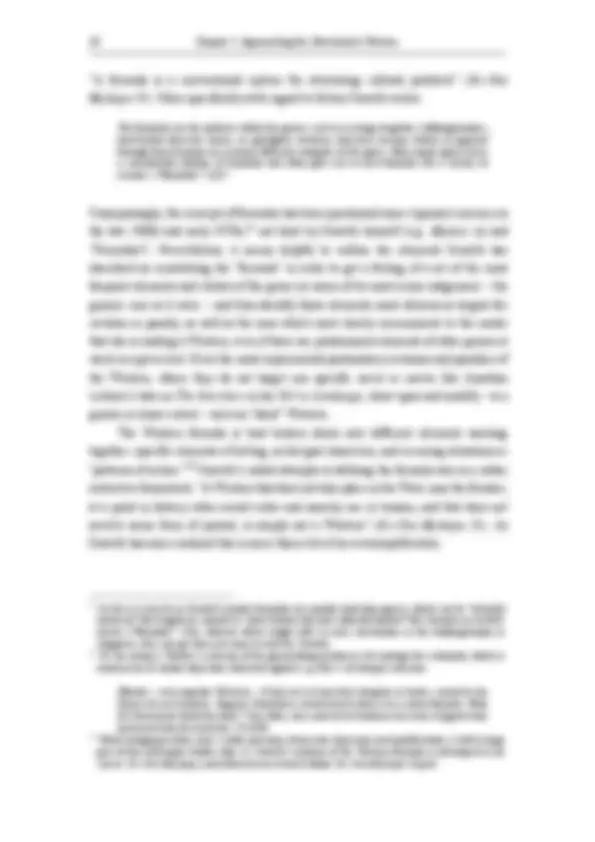
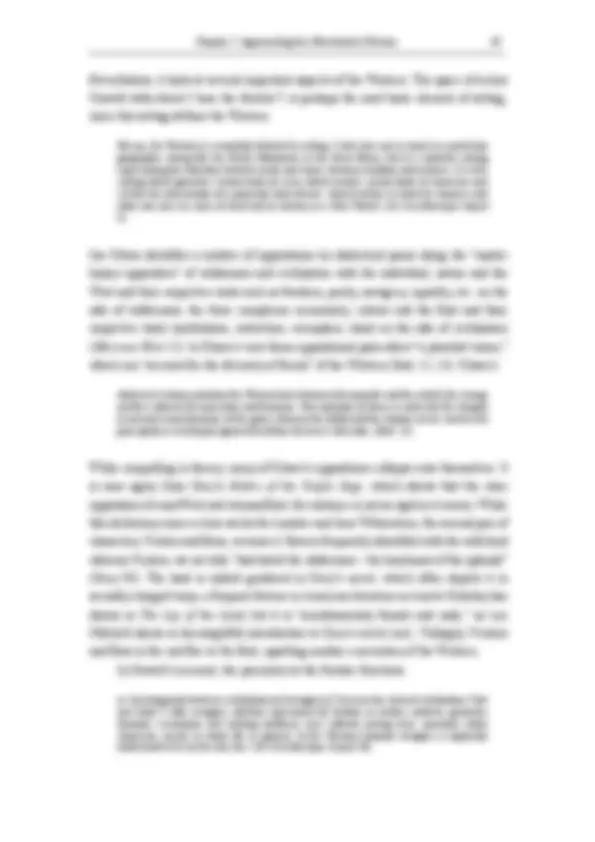
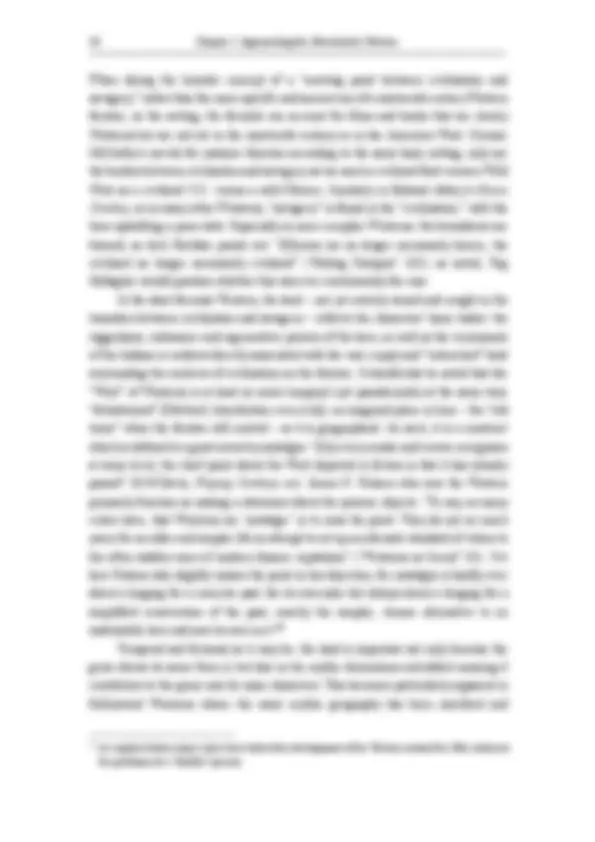
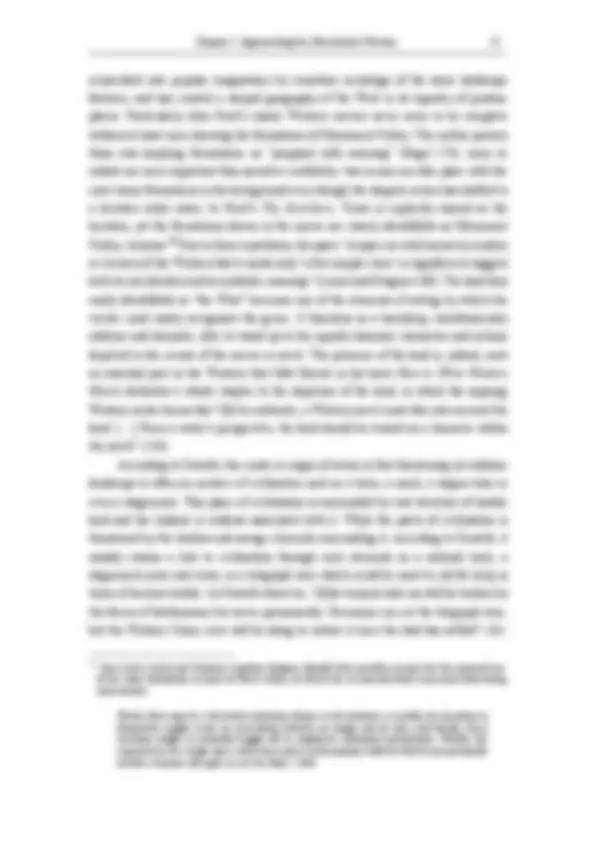
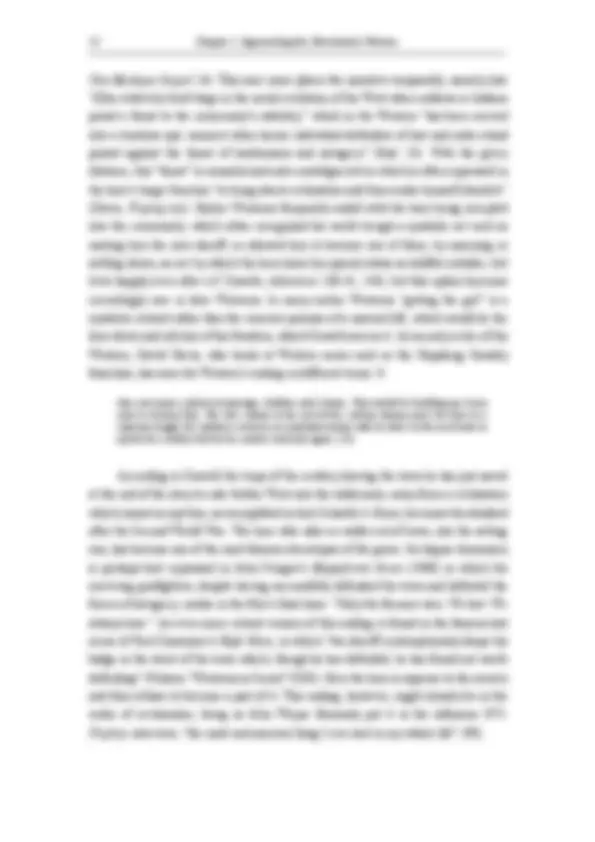
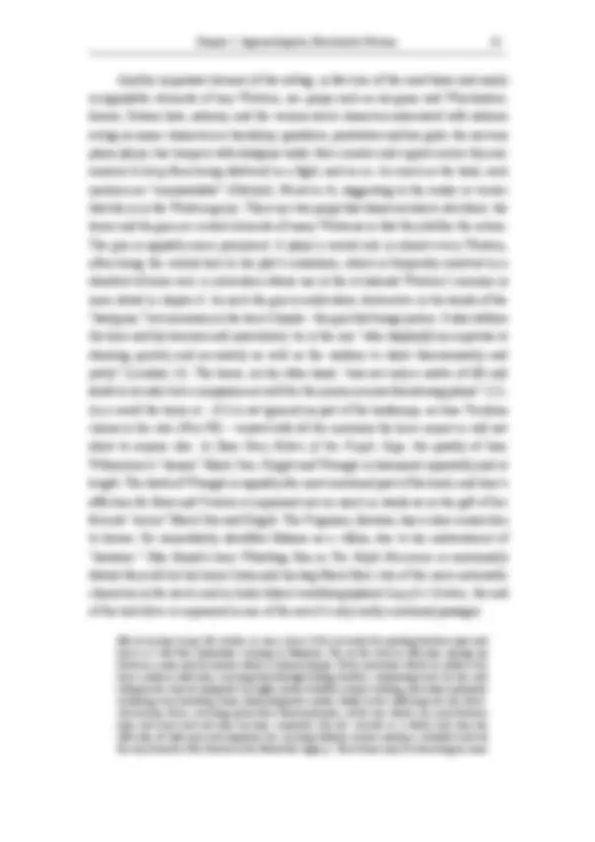
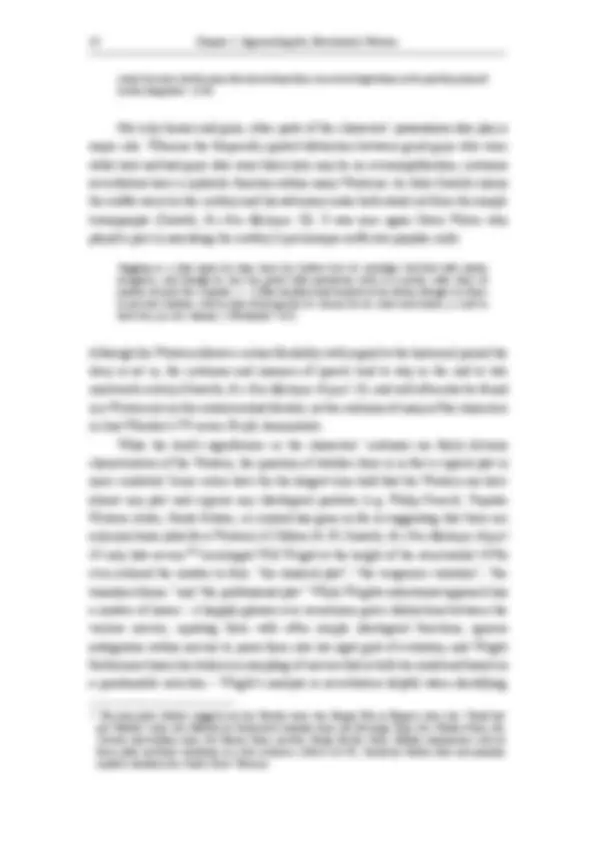
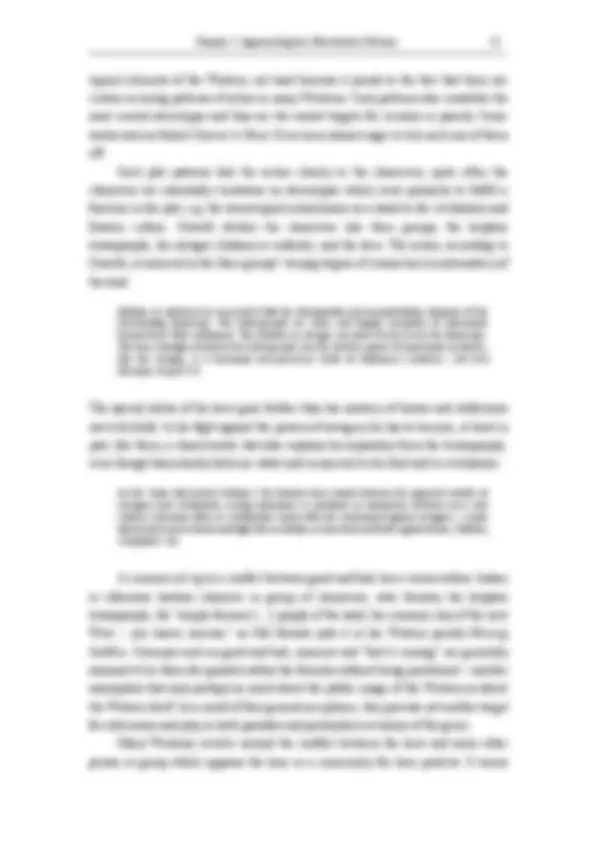
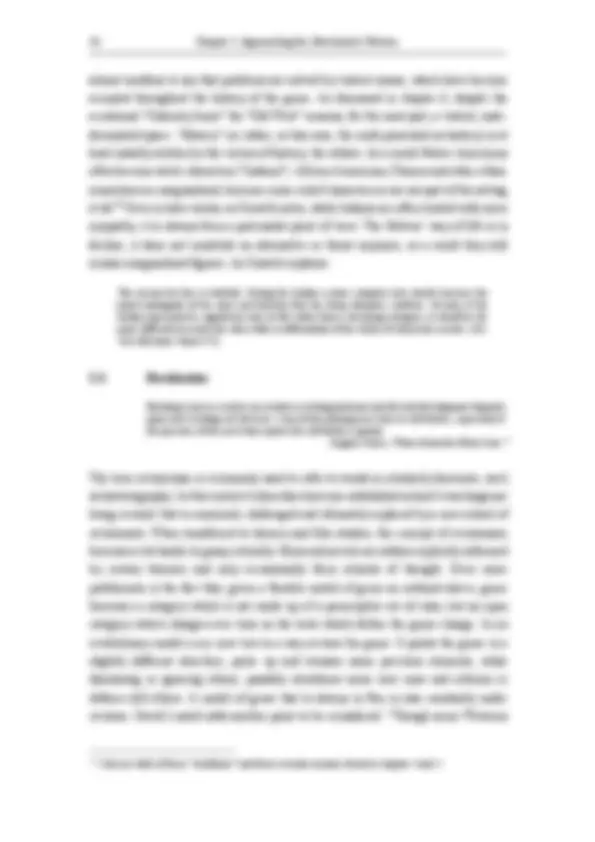
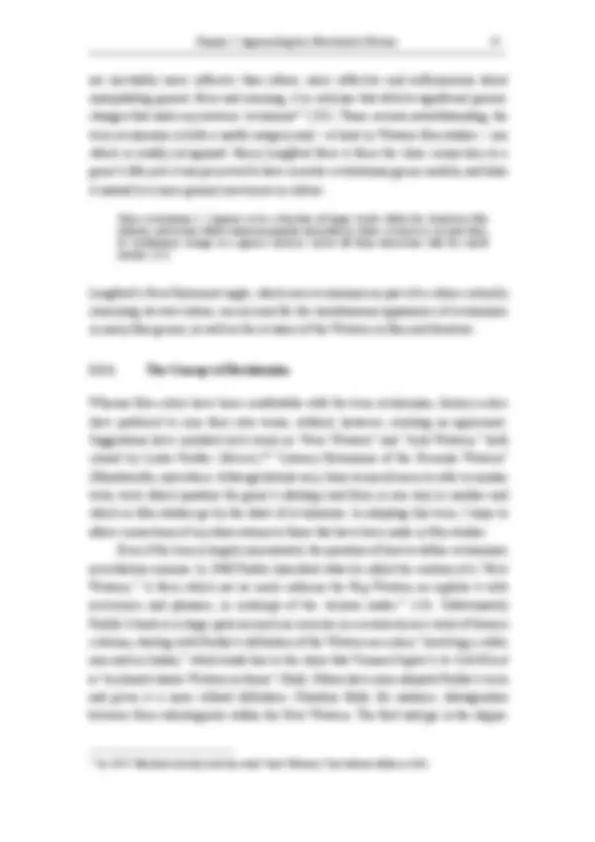
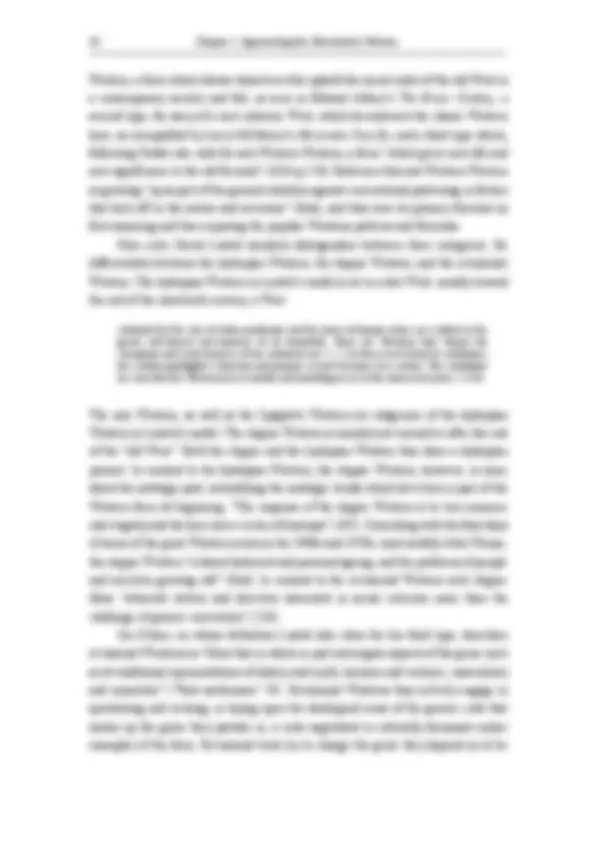
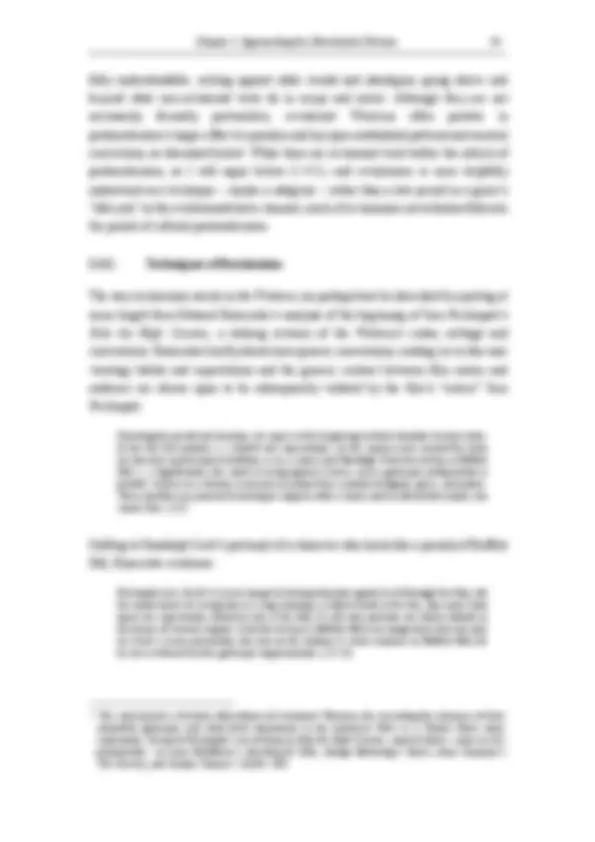
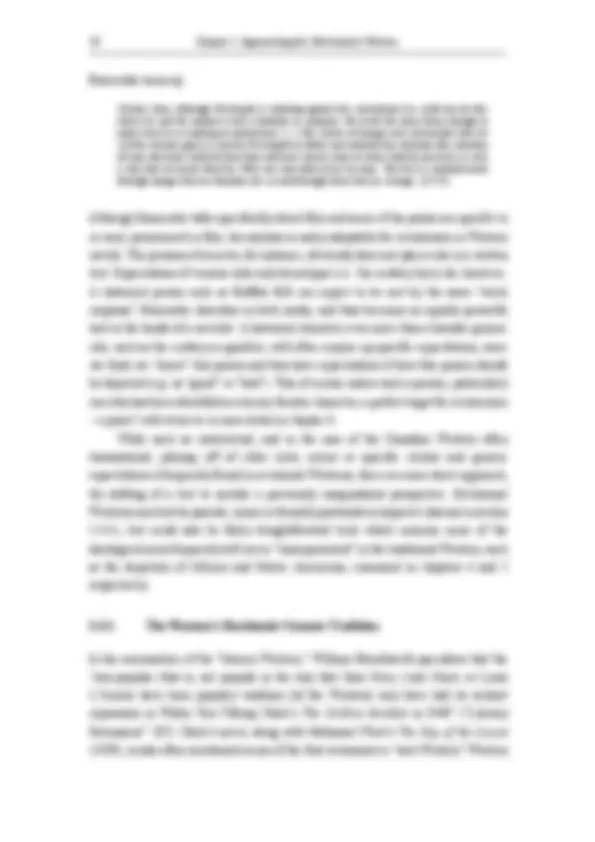
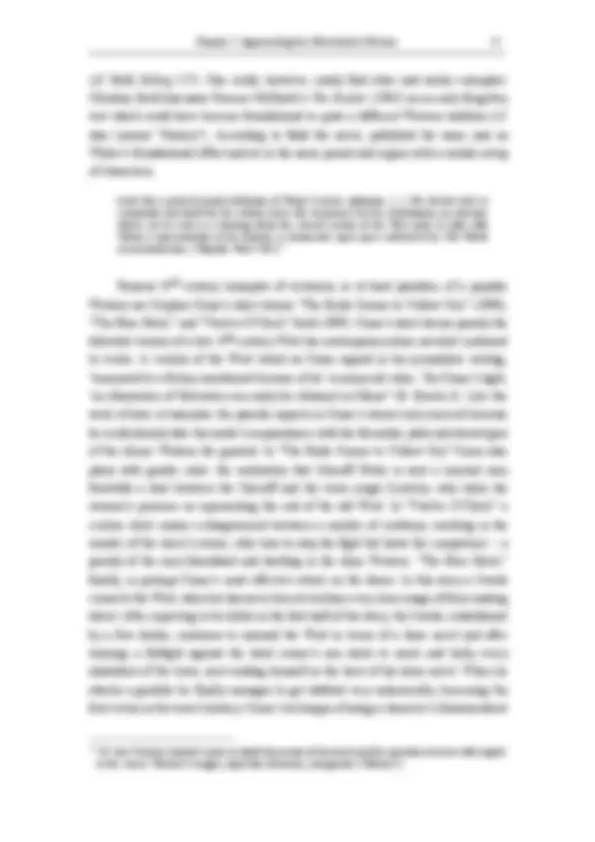
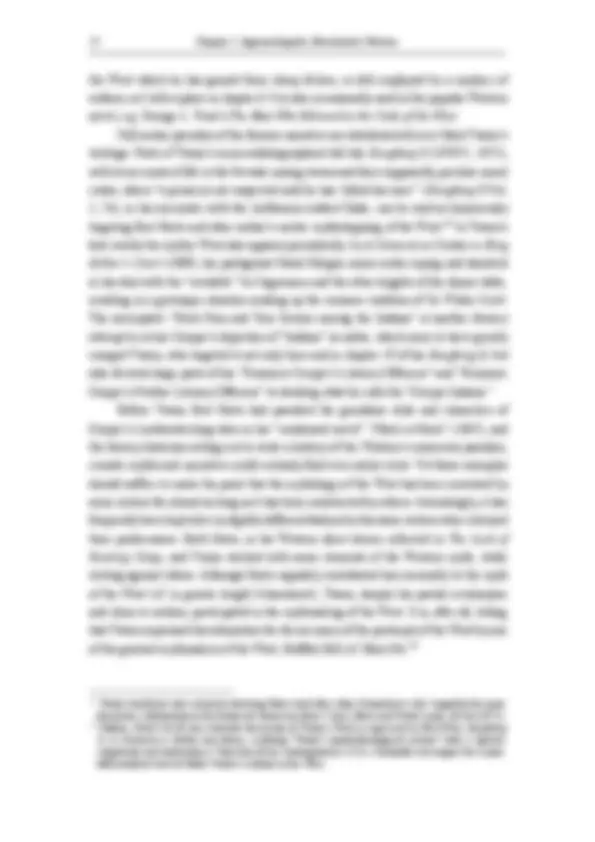
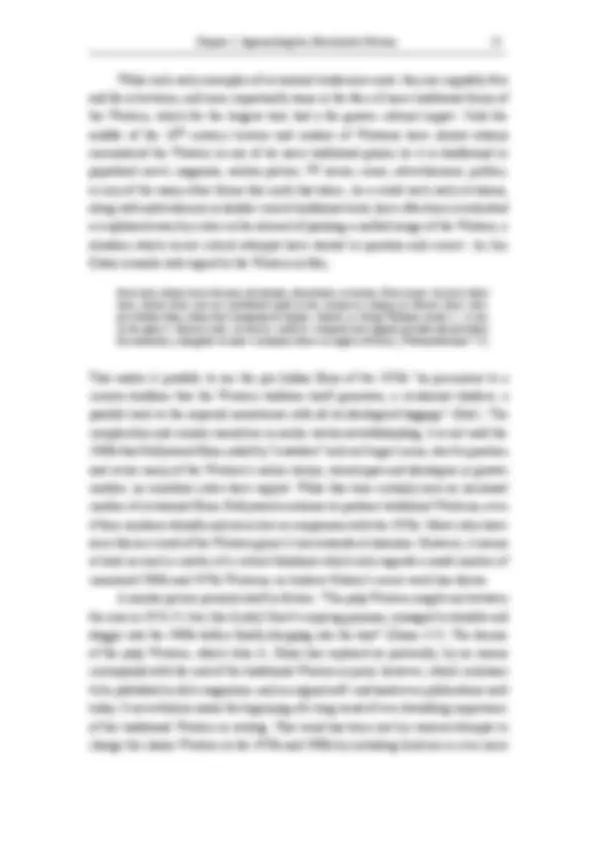
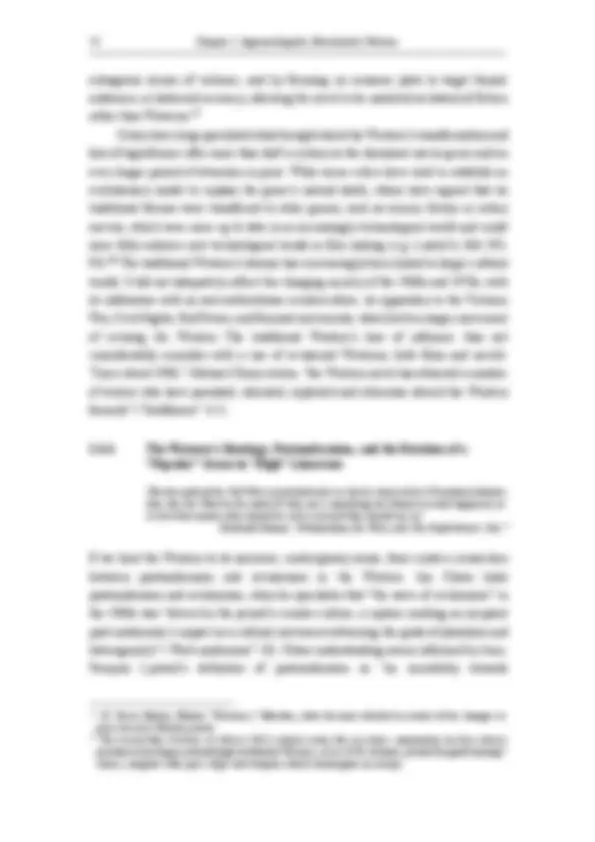
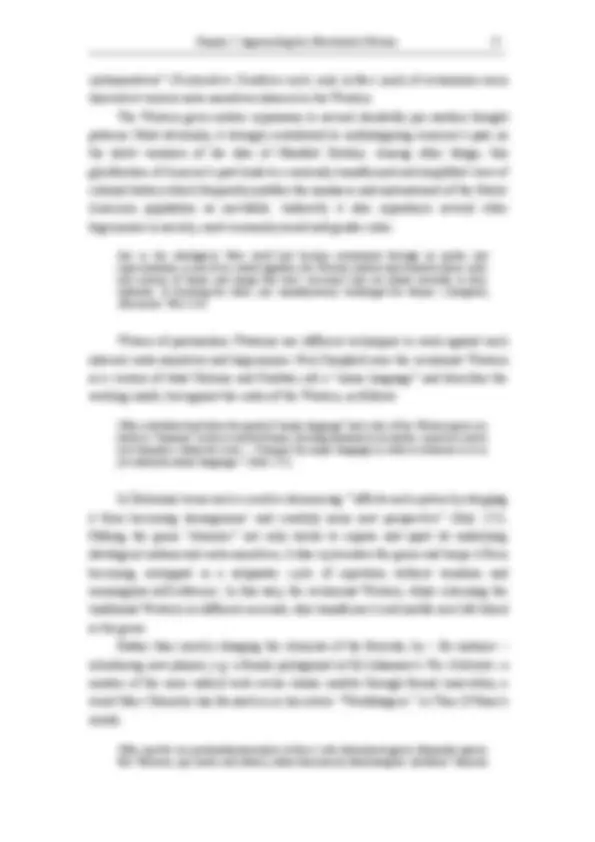
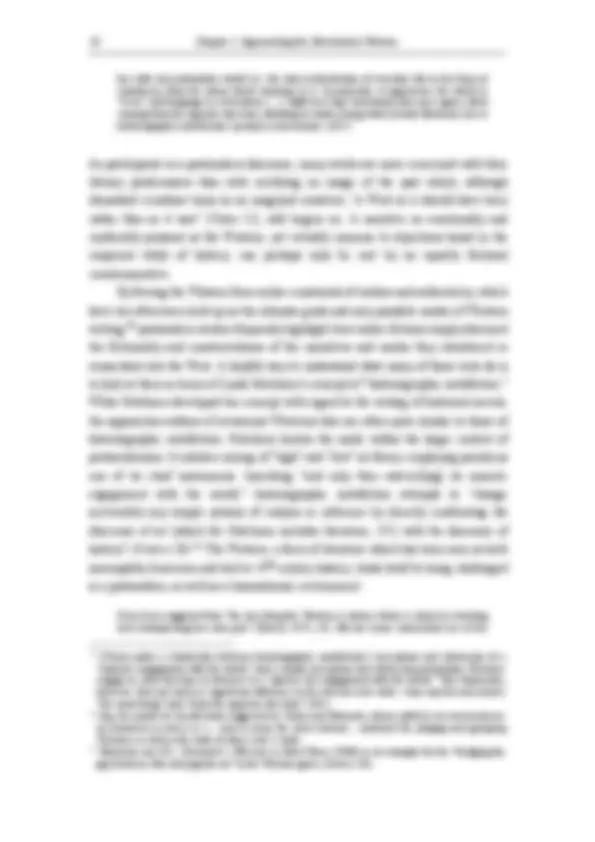
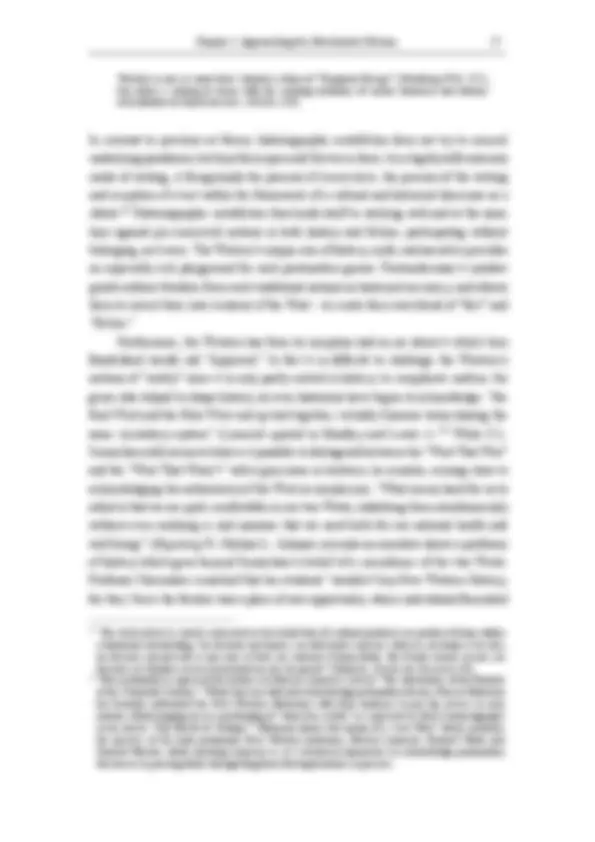
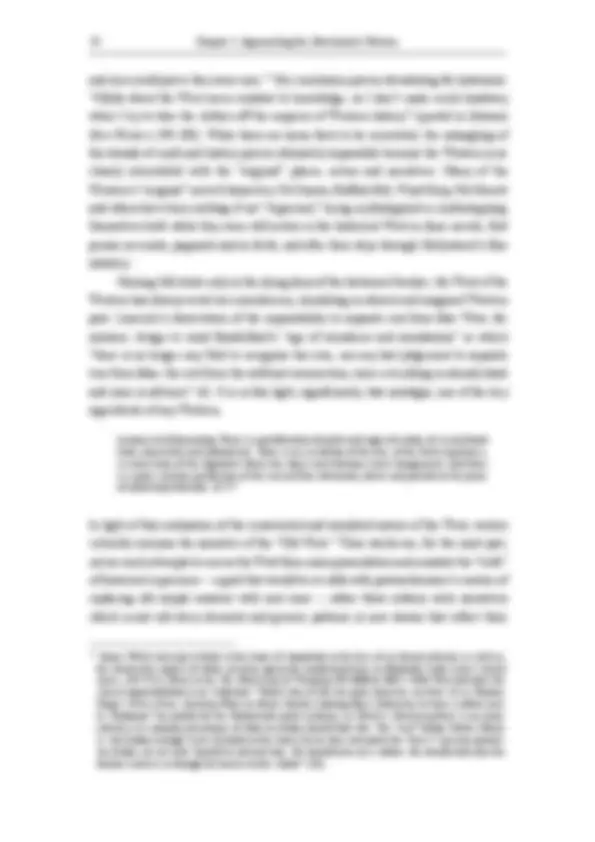
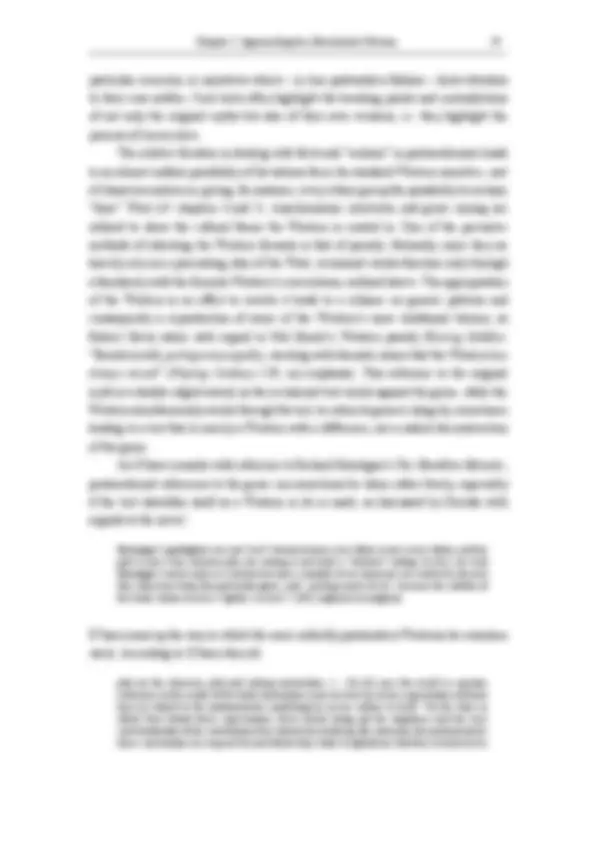
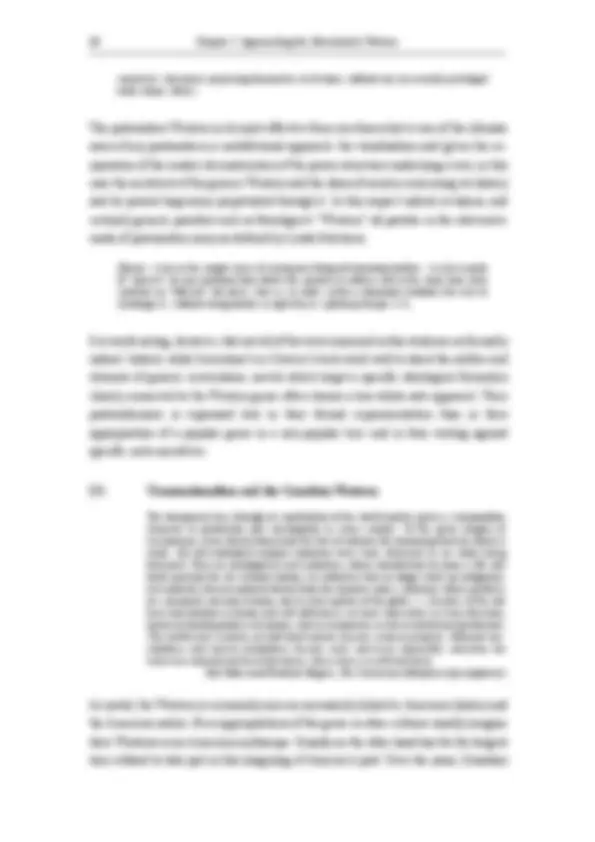
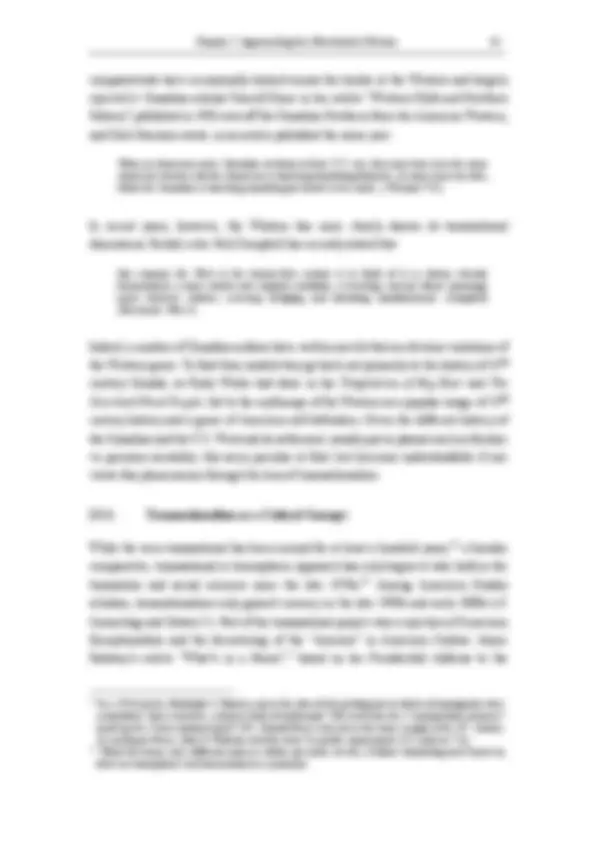
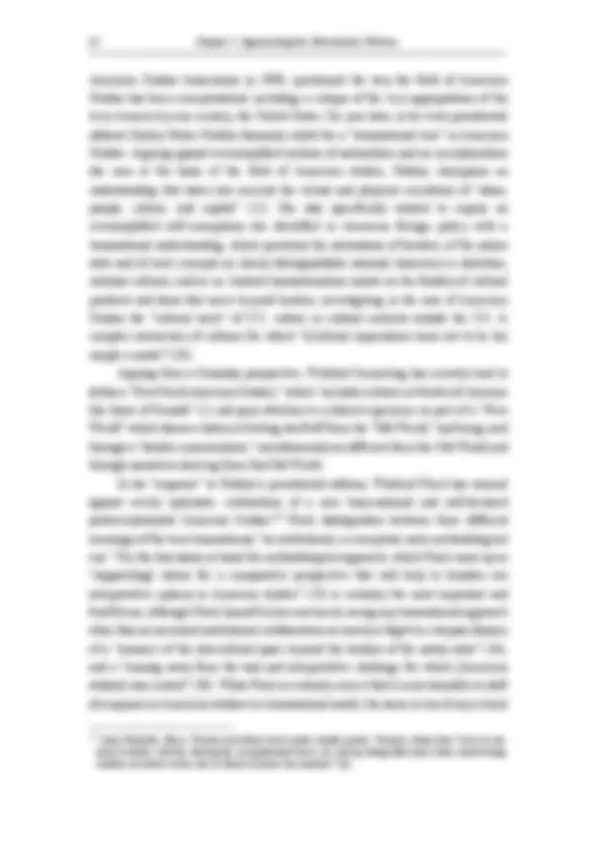
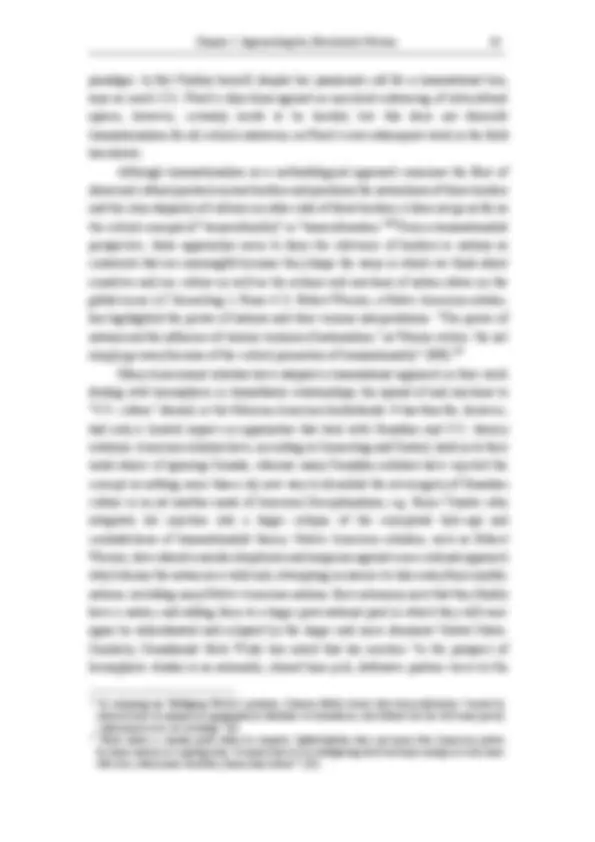
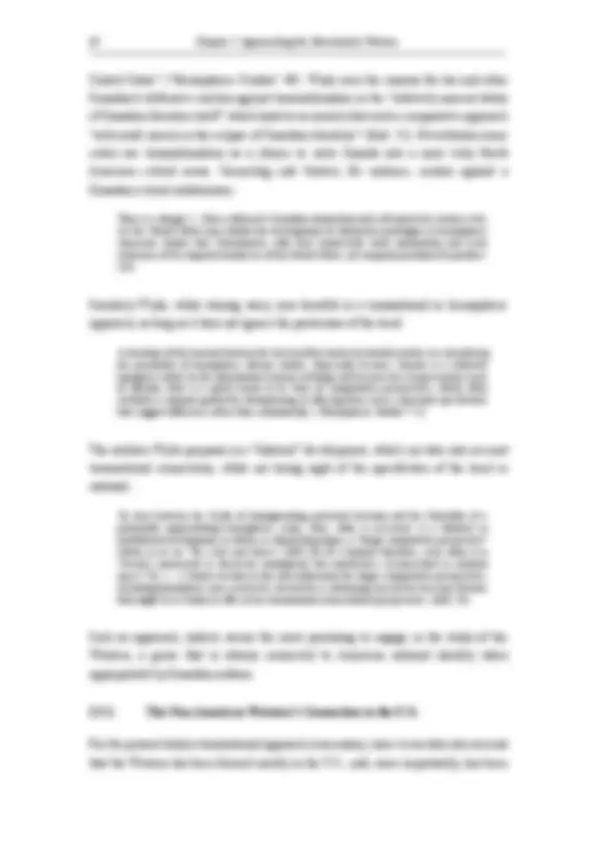
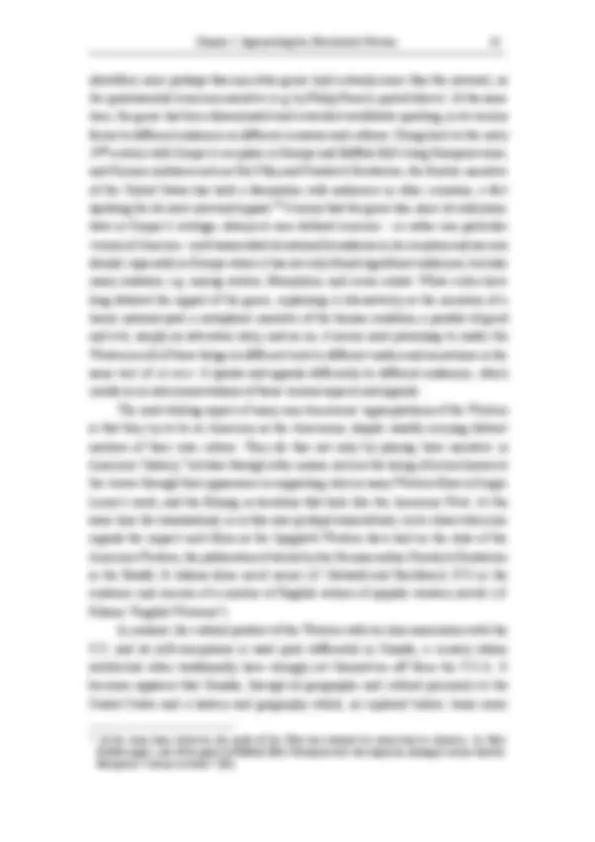
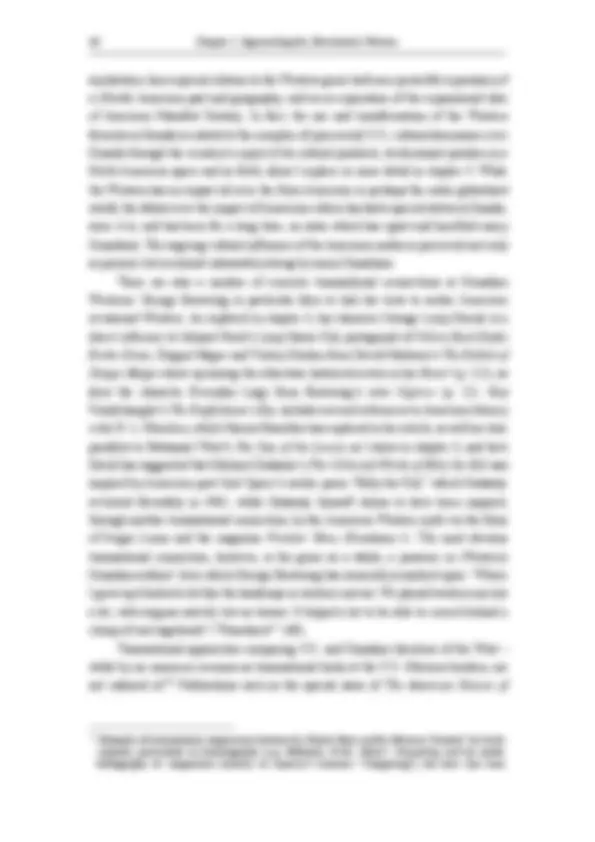
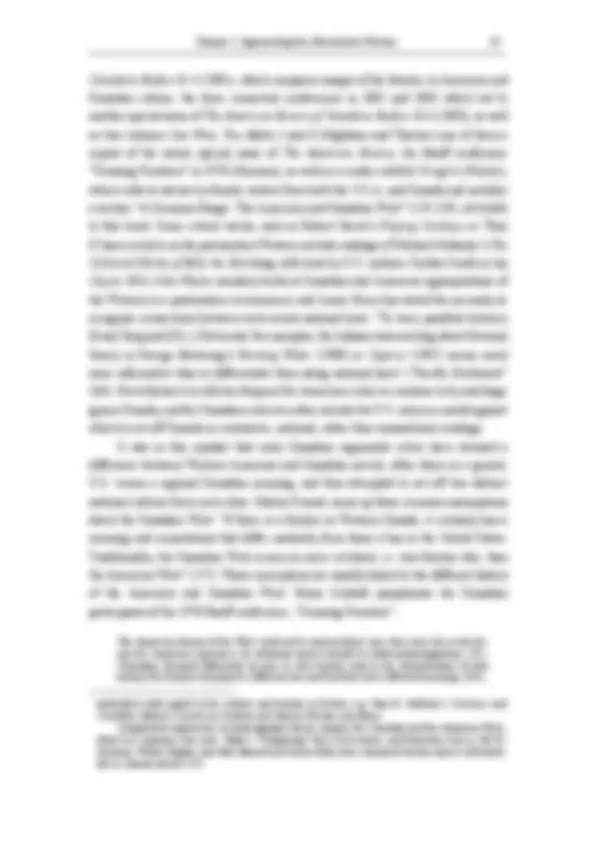
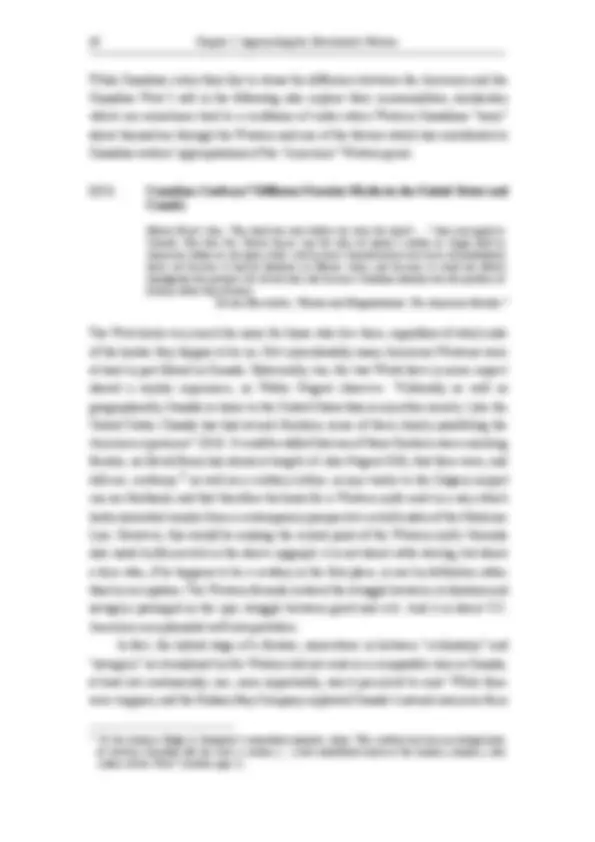
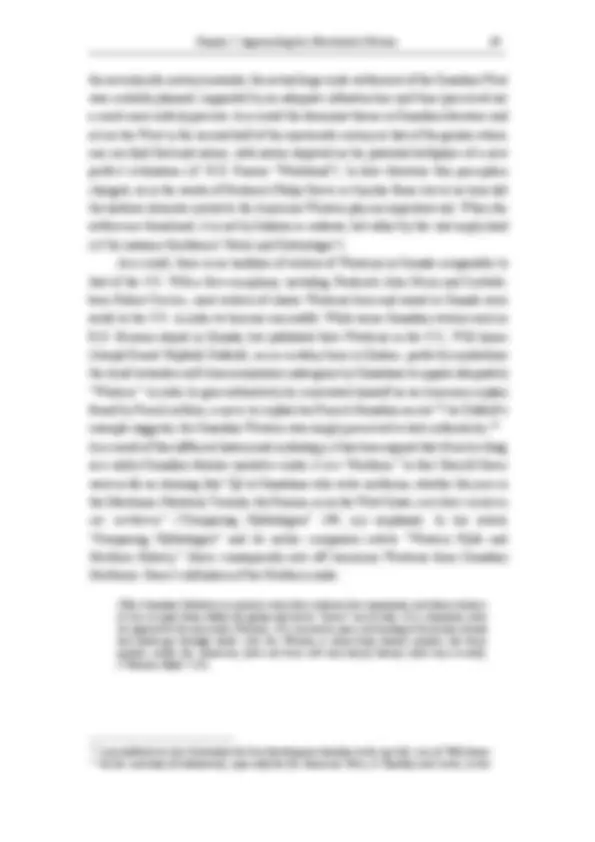
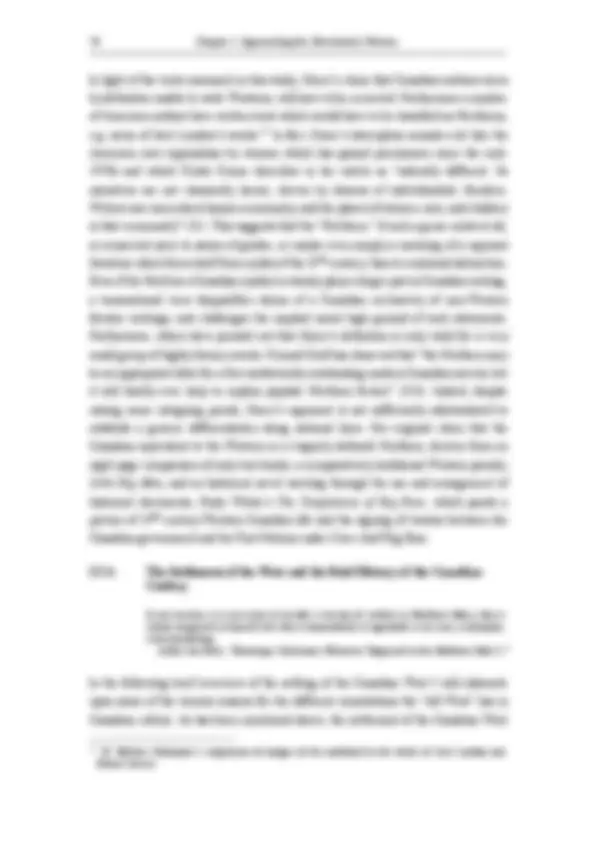
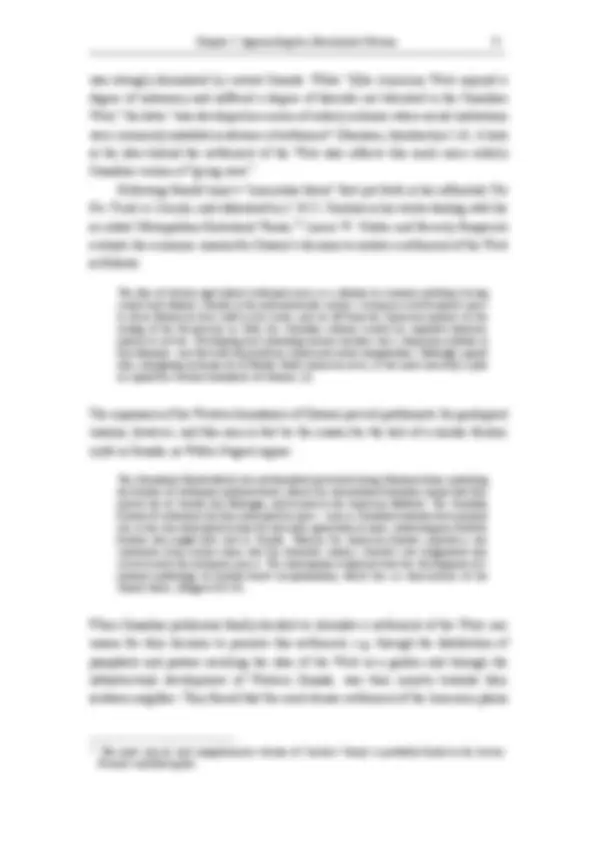
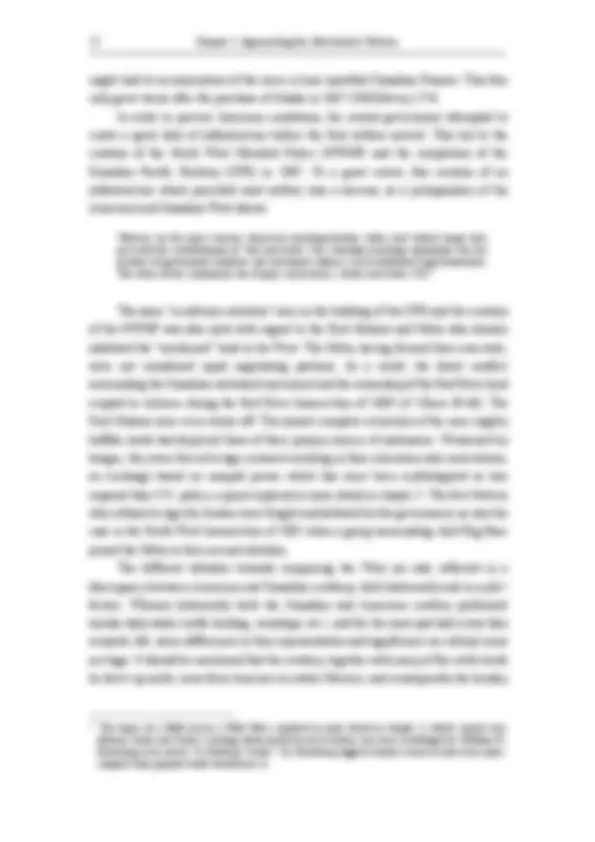
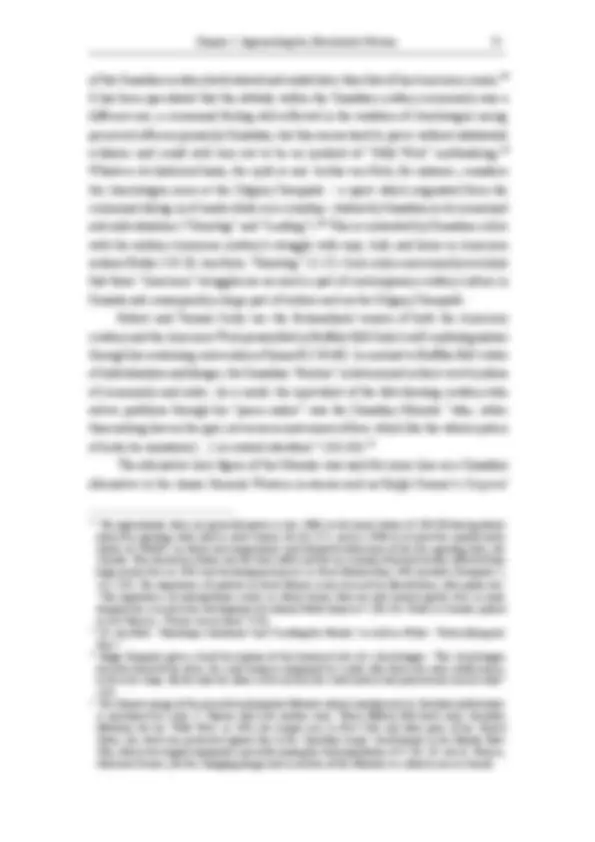
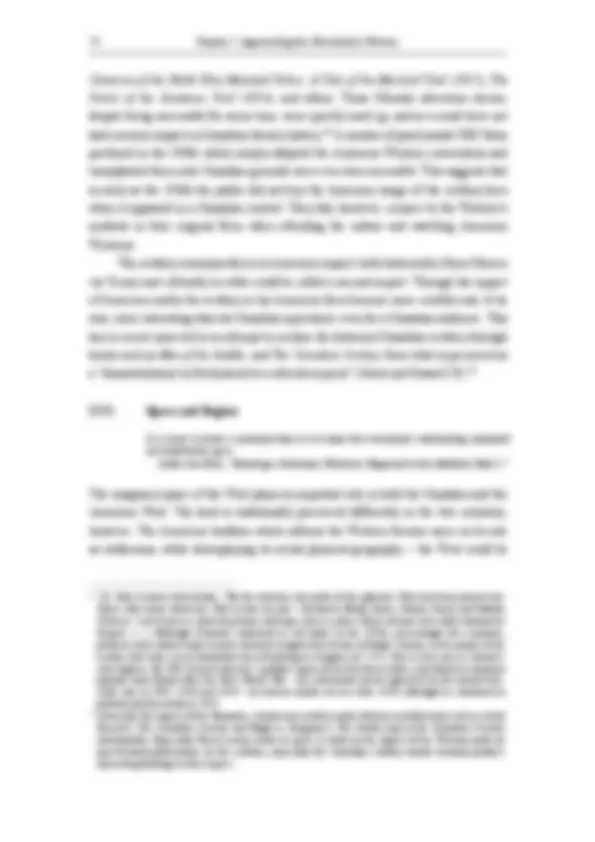
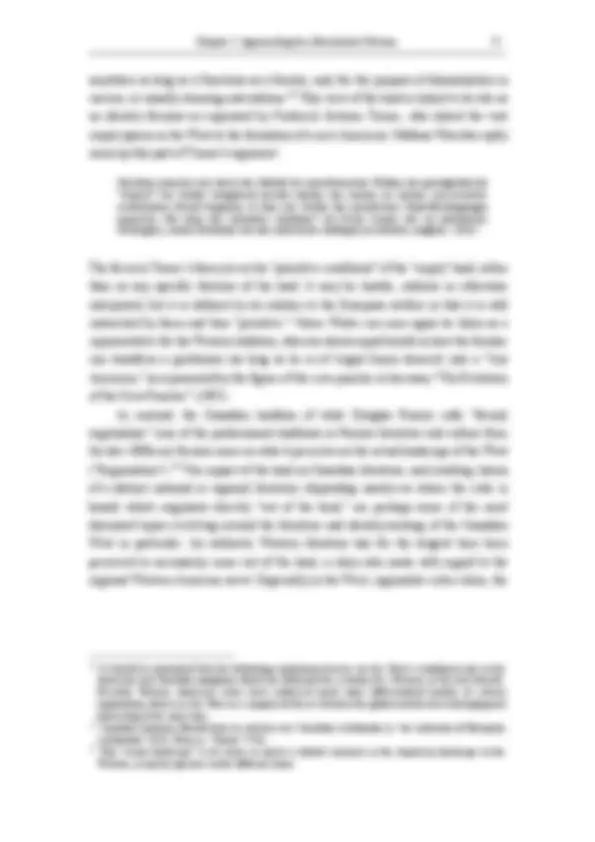
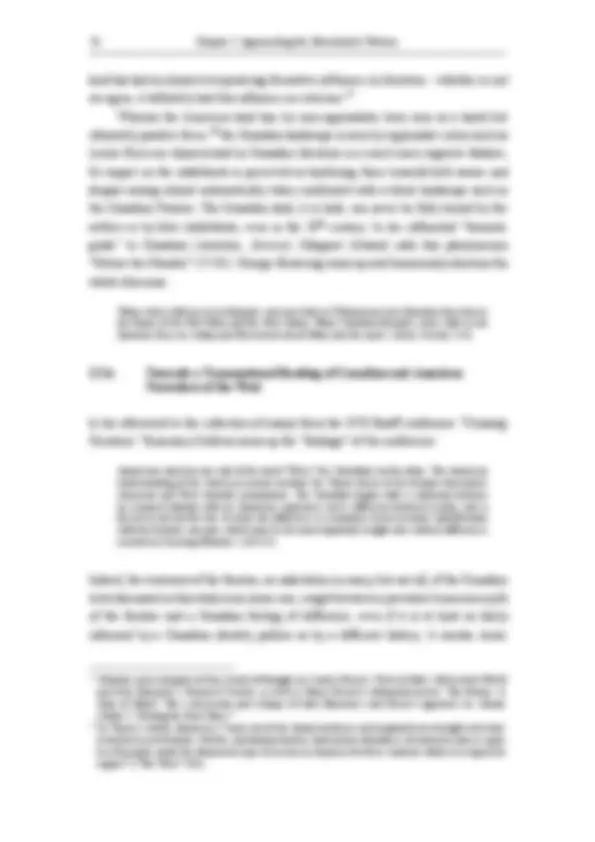
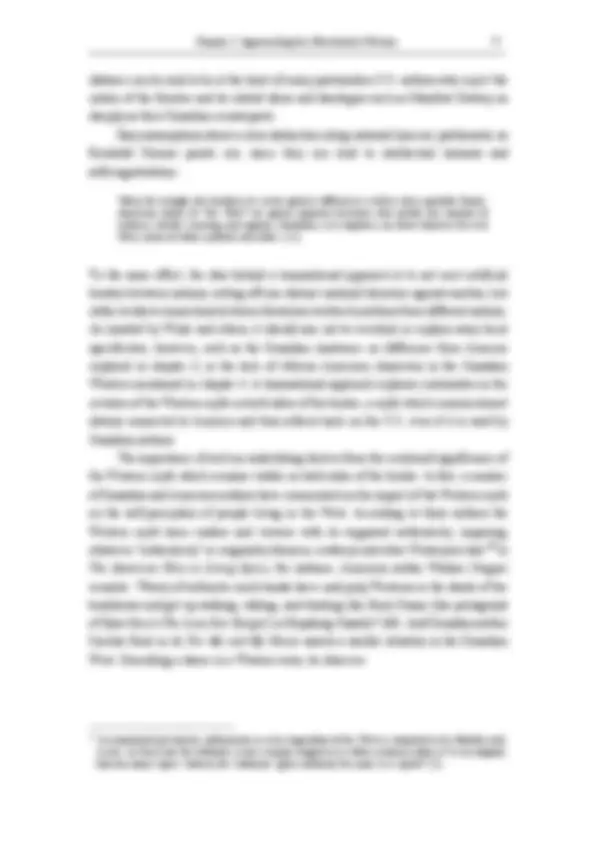
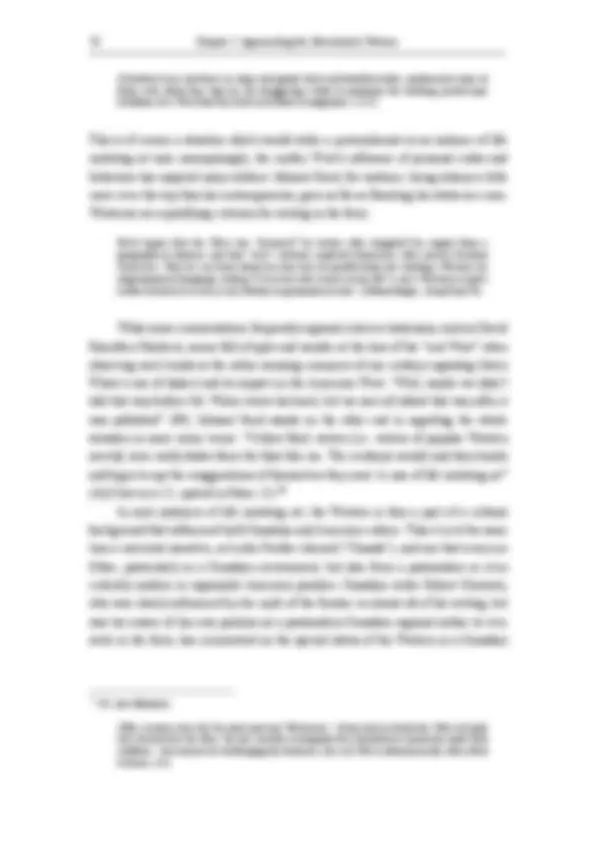
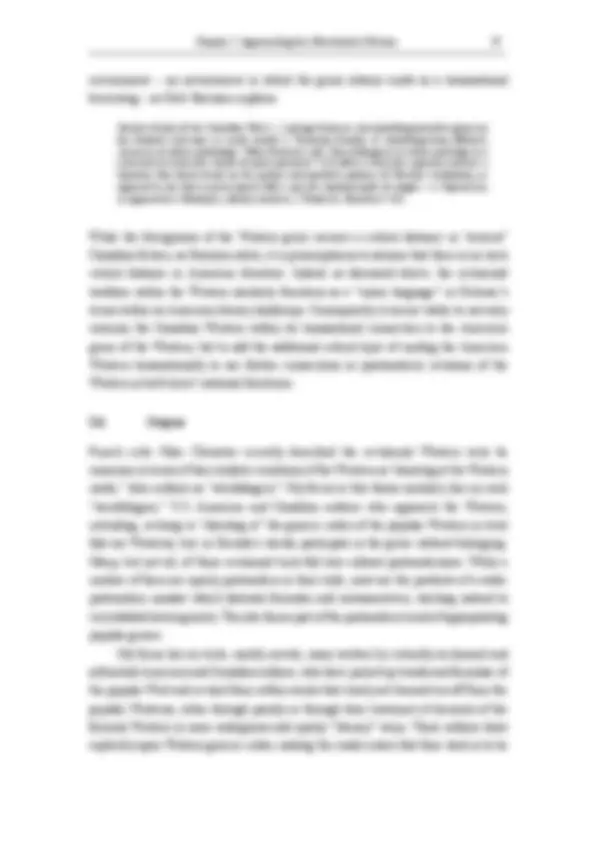
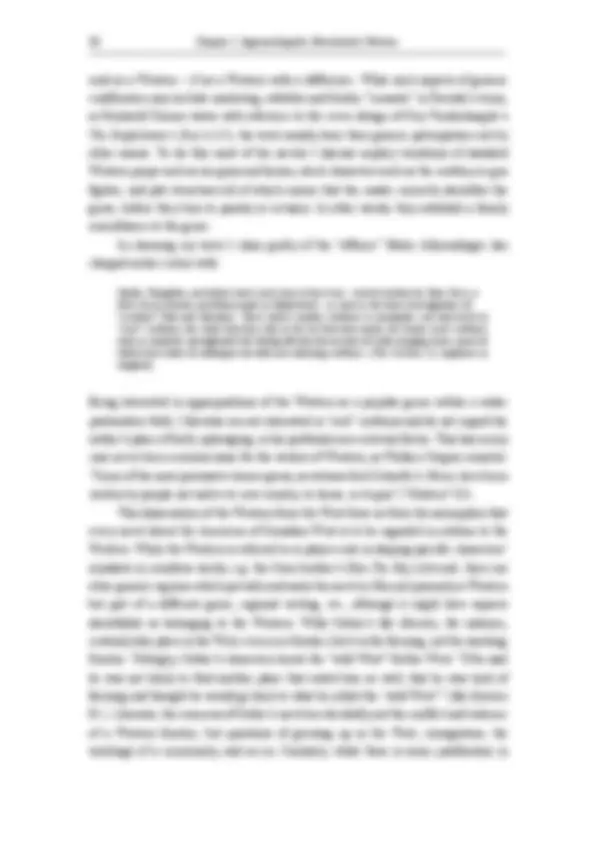
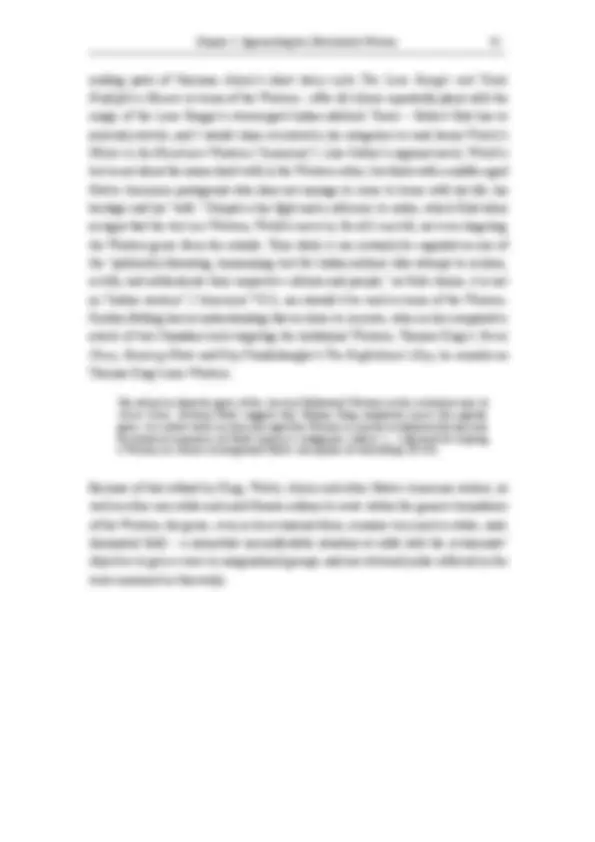
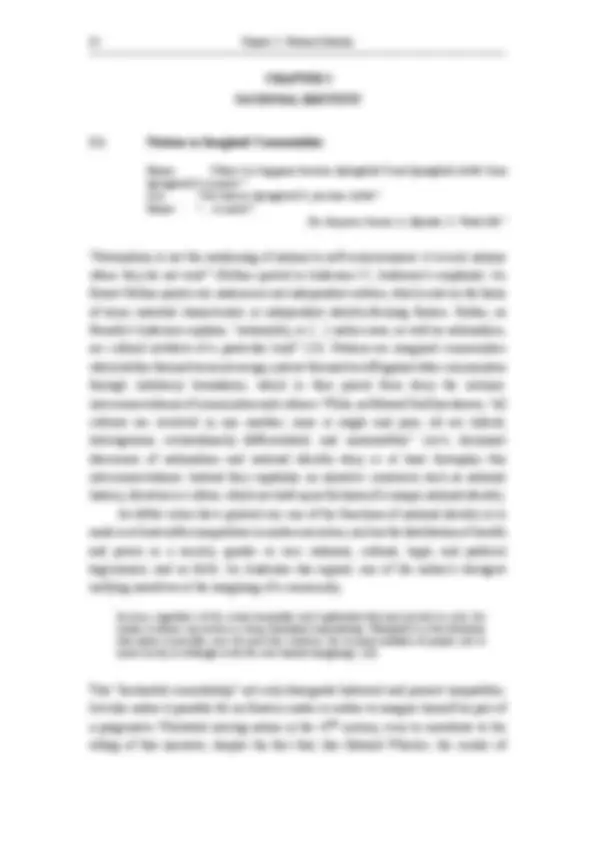
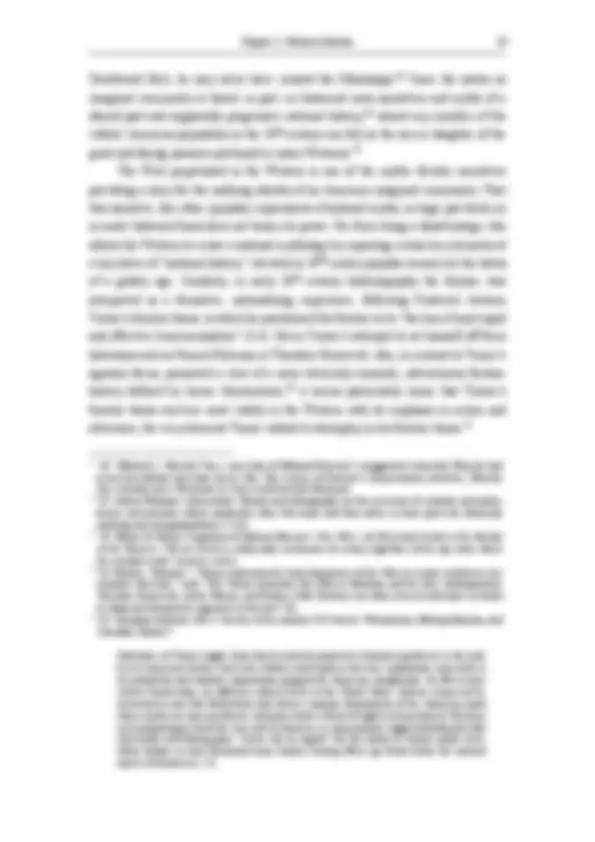
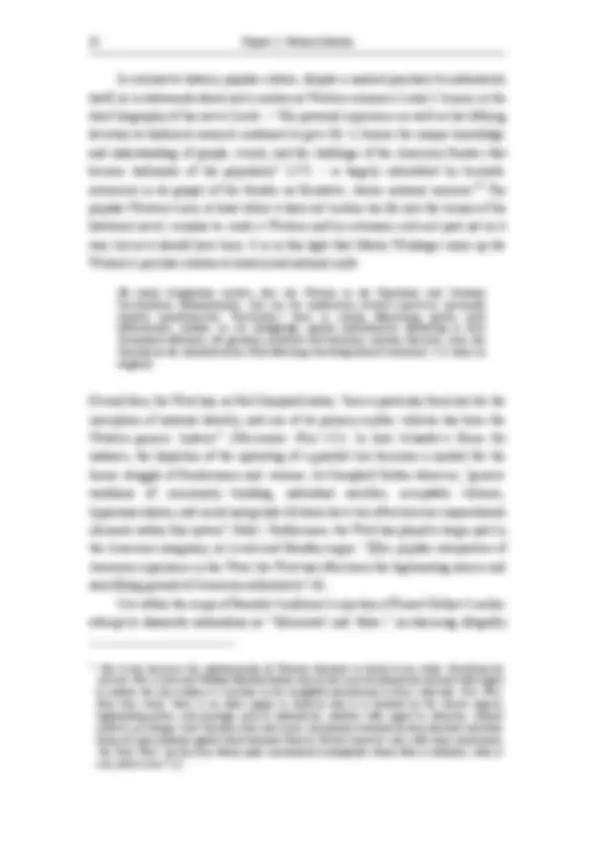
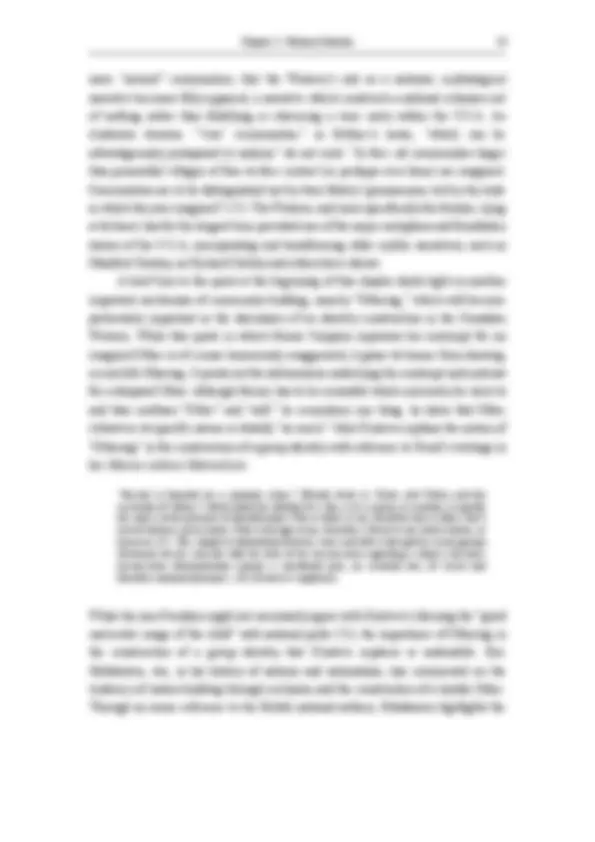
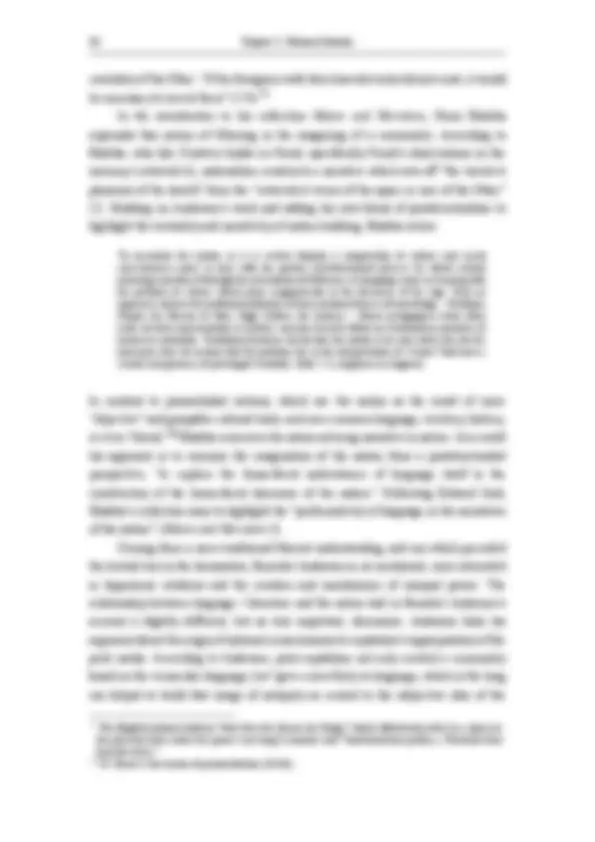
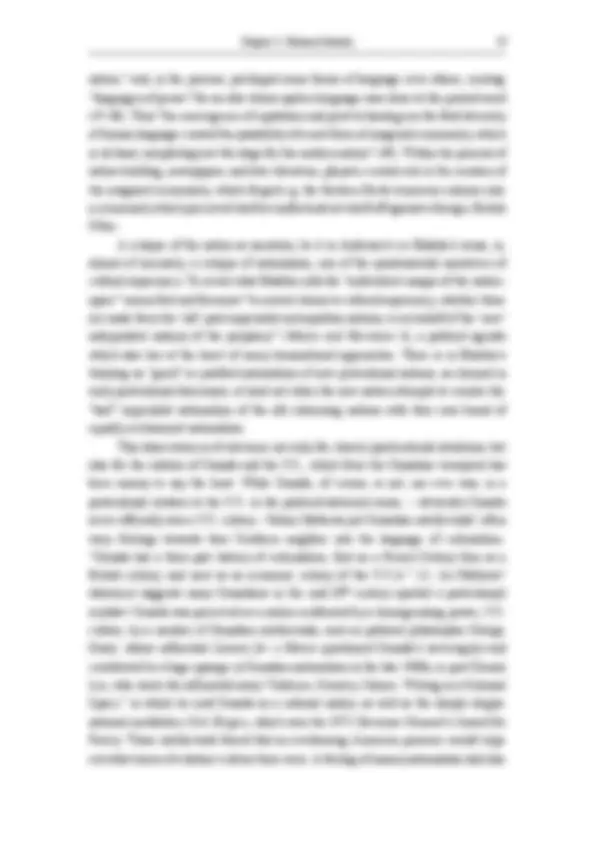
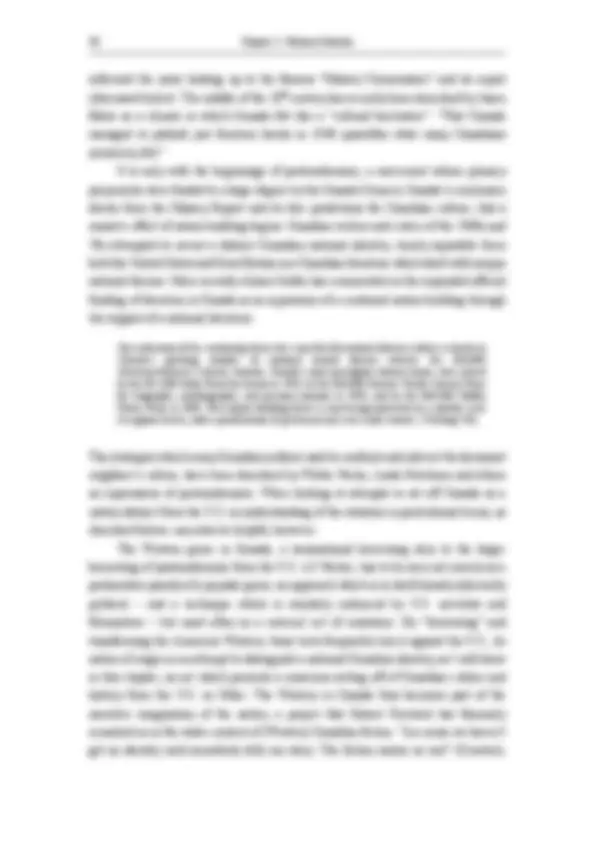
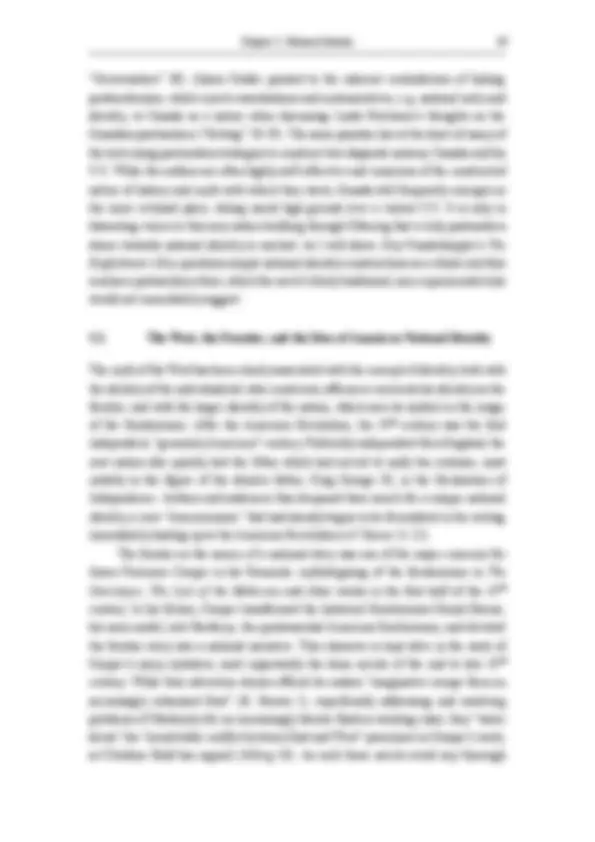
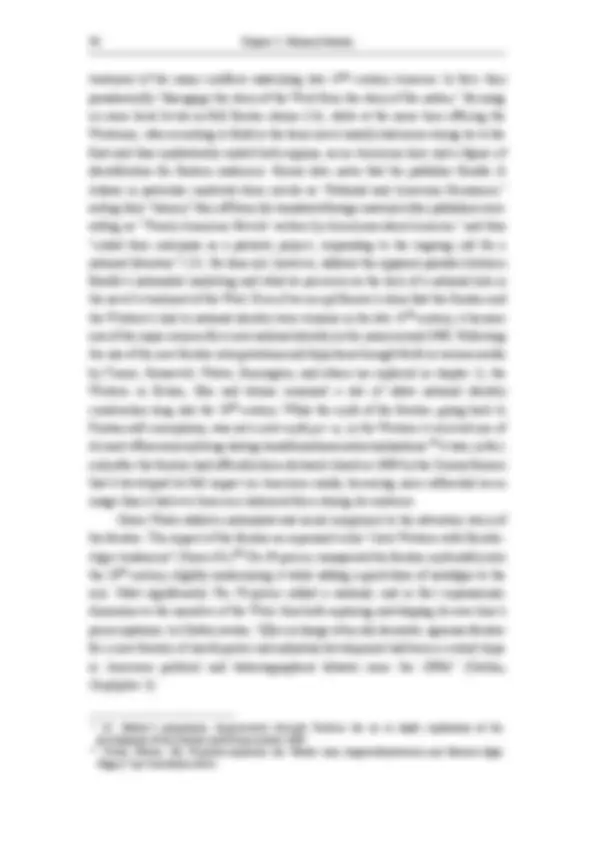
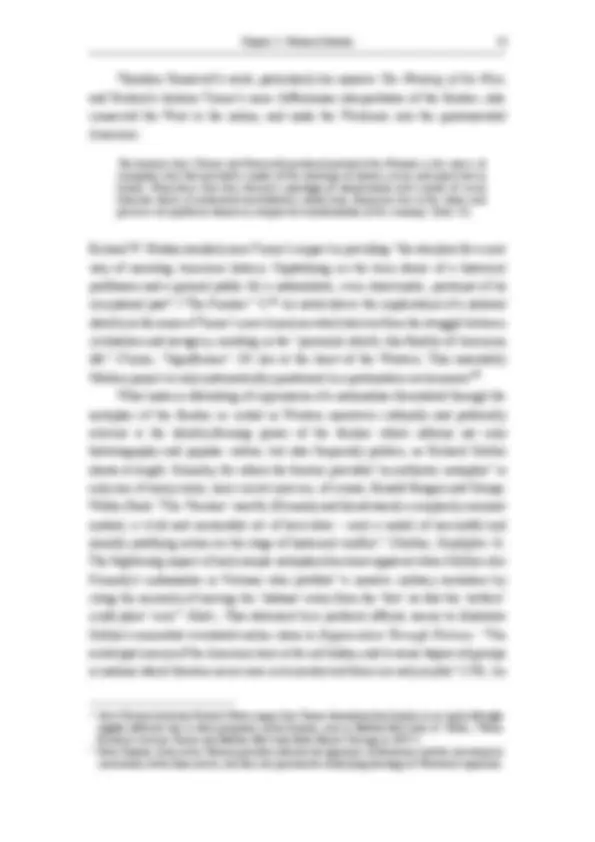
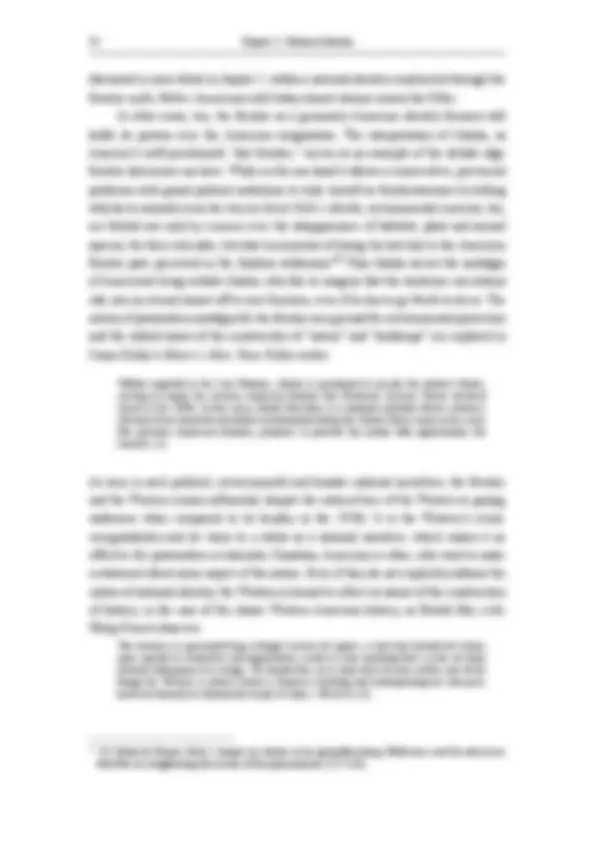


Study with the several resources on Docsity

Earn points by helping other students or get them with a premium plan


Prepare for your exams
Study with the several resources on Docsity

Earn points to download
Earn points by helping other students or get them with a premium plan
Community
Ask the community for help and clear up your study doubts
Discover the best universities in your country according to Docsity users
Free resources
Download our free guides on studying techniques, anxiety management strategies, and thesis advice from Docsity tutors
Indians and Native Americans in the American Revisionist Western . ... for while revisionism in Western films is a fairly well-studied field, ...
Typology: Summaries
1 / 373

This page cannot be seen from the preview
Don't miss anything!





























































































Revisionist Westerns in Canadian and U.S. American Literature
Inaugural-Dissertation zur Erlangung der Doktorwürde der Philologischen Fakultät der Albert-Ludwigs-Universität Freiburg i.Br.
vorgelegt von
Johannes Fehrle aus Freiburg i. Br.
Titel der eingereichten Dissertationsschrift:
Postmodern Gunslingers in a Transnational West: Revisions of the Western in Canadian and
American Literature
Erstgutachter: Prof. Dr. Wolfgang Hochbruck
Zweitgutachterin: Prof. Dr. Barbara Korte
Drittgutachter: Prof. Dr. Willi Oberkrome
Vorsitzender des Promotionsausschusses
der Gemeinsamen Kommission der
Philologischen, Philosophischen und Wirtschafts-
und Verhaltenswissenschaftlichen Fakultät: Prof. Dr. Felix Heinzer
Datum der Disputation: 12.03.
2.5.3. Canadian Cowboys? Different Frontier Myths in the United States and Canada
2 Chapter 1: Introduction
French, Wright, and countless others, as well as the more recent studies by McGee, Lusted, Weidinger, and literally dozens of other critics. Especially when read alongside one another, these studies are so insightful and extensive that they leave little to add – which is one of the reasons I take film only as a cultural background in this study, drawing on a number of the aforementioned scholars’ findings. Other critics have been more interested in a more universal concept of the Western, following Henry Nash Smith’s approach of “myth criticism”: Richard Slotkin’s monumental trilogy on the symbolic use of frontier imagery in American history immediately comes to mind, as do Cawelti’s seminal studies The Six-Gun Mystique and his broader Adventure, Mystery, and Romance , as well as a number of his articles, many of them collected in Mystery, Violence, and Popular Culture. More narrow, but no less important studies considering both film and novels have been undertaken by Jane Tompkins and Lee Mitchell, with Tompkins examining the novels of Owen Wister, Zane Gray and Louis L’Amour, Mitchell examining in more detail Cooper, the paintings of Albert Bierstadt, once again Wister’s Virginian and Grey’s Riders of the Purple Sage , before shifting his attention to films. Forrest G. Robinson in Having it Both Ways similarly reexamines classic Western novels: once again we find Cooper, Wister, Grey, and Schaefer, this time alongside Jack London’s The SeaWolf. The general thrust seems to go in the same direction in all of these studies: a rereading of works, enshrined, so to speak, in the canon of most influential Western novels. These foundational authors are also the focus of a number of monographs, not to mention countless articles. Wister and Cooper have attracted their fair share of biographies and in-depth analyses, as have more popular writers such as Zane Grey or Eugene Manlove Rhodes. Mitchell and Cawelti represent a trend in Western studies. They present a narrative exemplified by Jim Hitt’s title The American West from Fiction (1823-1976) into Film (1909-1986).^2 The story goes something like this: Westerns started out as novels, with Cooper and/or Wister laying the foundations of the genre, and writers like Zane Grey and Max Brandt cementing them into a formula. For a while other popular writers put out novels which added little to the Grey-Wister formula and more serious writers such as Vardis Fisher, Frederick Manfred or Walter Van Tilburg Clark molded the same material into a more serious art form. But somewhere along the way film took over and essentially made the Western novel superfluous through its larger public
(^2) I am somewhat hijacking Hitt’s title, as his focus is on adaptations of Western novels into films and the dates in his title refer to the works he examines in his study. In fact Hitt decidedly does not promote the vision that film has superseded the Western novel. On the contrary, he believes that “[t]he western continues to be a viable form of literature” (293) whereas he sees the Western’s potential as a source for films spent or transferred to other genres like science fiction and action films, whose violence the Western cannot compete with (294).
Chapter 1: Introduction 3
appeal. The only notable exception seems to be Louis L’Amour, “the last of the breed” (Tompkins, West 205). While Western films thrived until 1970s and after a hiatus recuperated somewhat in the early 1990s, the Western genre in literature has been left moribund and at the mercy of hack writers of ever dwindling importance since the 1960s. These writers drove it to ultimate stagnation in their strictly formulaic writing (Bold, Selling 155-56) or in their capitalization on base instinct in the porno and ultra- violent Western (cf. Tuska and Piekarski 264-65; Marsden 56, 59; Sonnichsen, Hopalong esp. 22-39 and 157-75). While many critics have a slight bias towards film, especially when looking at the last 50 years of the Western’s existence, there are nevertheless a significant number of studies on the Western novel. Starting with James K. Folsom’s The American Western Novel (1966), several writers have dedicated monographs to the Western in literature. John R. Milton, Christine Bold and most recently Jeffrey Wallmann have written general studies on the Western as literature focusing on different traditions: the ‘literary’ Western in Milton’s case, broader aspects of its changing history and aesthetics in Wallmann’s, or its role as a commodity in Bold’s case. With the exception of one unpublished dissertation on parody and satire in the Western novel, Michael Cleary’s “Saddlesore,” and parts of Robert Murray Davis’ insightful and entertaining but slightly erratic essay collection Playing Cowboys , there are, however, no book length criticism of revisionism in Western novels. This is more than a bit surprising, for while revisionism in Western films is a fairly well-studied field, the revisionist Western novel has attracted much less critical attention. It would be a bit of an overstatement to claim that it has escaped notice in the field; after all there are a few articles and one or two book chapters on the subject, yet the existence of revisionism in the Western novel has generally been relegated to the end of broader studies, or mentioned only in passing in overview articles on the genre. Bold and Wallmann each devote a short chapter to the Western after 1960, mentioning and briefly discussing a number of novels, Hitt has a chapter on Revisionists and one on the Modern West (though his categorization sometimes seems peculiar),^3 and Sonnichsen mentions a number of revisionist texts and writers, and Leslie Fiedler’s Return of the Vanishing American , while supposedly a study of the Western, discusses few texts that anybody but Fielder would classify as Westerns. Richard Etulain seems to have expressed a general assumption in his article “Westerns” when, after mentioning a few Western satires in films and novels, he writes: “interest in this approach to the popular genre had fallen off during the last decade [i.e. the late 1970s and 1980s]” (331). The one field
(^3) Little Big Man and a number of other revisionist Westerns, for instance, are discussed in a section entitled “Shadow Warriors,” a chapter which starts out with Helen Hunt Jackson’s Ramona and includes Zane Grey’s The Vanishing American.
Chapter 1: Introduction 5
have hit the nail on the head when in 1997 he summarized recent critic’s approach in his Epilogue to the massive update of the Western Literature Association’s more “traditional” Literary History of the American West :
The common denominator in the new western writing and the new, revisionist western criticism is that an alternative to the frontier mentality is finally beginning to be created. The frontier mind is dualistic and casually exploitative in its attitudes toward nature, invidiously hierarchical in its approach toward women and minorities, and above all, resolutely un-self- critical. […] The frontier mind gave us the shibboleth that we had “won” the West, and also gave us an unending stream of subliterary, fantasy-fulfilling, formulaic texts. But today, western literature moves much more decisively, much more as a majority phenomenon, toward post-frontier maturity. (963)
In the face of such dismissive words and the pronouncement of a New Western criticism, how do I dare to write what must seem an almost “classic” study of revisionist Western texts, one reading literature selected on the basis that it can easily be recognized as generically Western, and one which includes for the most part texts written by white men? The idea behind what must now seem an almost conservative selection of my corpus is not at all to return the focus of scholars to the “good old times” when the Western was still a Western. Instead my goals in this study are much humbler, and much less backward: I am happy to let Western criticism go the way it has been going, riding drag and gathering in the stray texts that have been lost on the trek, before catching up with the rest of the herd. Nevertheless, I believe it worthwhile to focus on a number of works written within the more narrowly defined generic boundaries of the Western – works which for the most part very consciously evoke the Western and its generic codes and patterns as a framework in which they undertake the revisions of such patterns. In this study I want to draw the larger lines connecting such texts, connections which, as I will show, often reach beyond national borders, examine their ideological concerns, and analyze the different approaches authors take in their revisions, looking at their successes as well as their shortcomings. After all, if critics have long recognized the Western’s ideological pitfalls and limitations, so too have authors, and one could claim with some justification that they have done so for almost as long as the genre has existed. Some writers have attacked the Western from the outside, sometimes just dealing it a blow in passing, others, women, Native Americans, and “ethnic” writers, have long attempted to write their own stories of the West, ignoring or bypassing those myths that would eventually inform the Western genre as far as they could. These texts in particular are now the
perspectives that help reshape and question persistent grids of representation” ( The Rhizomatic West 40).
6 Chapter 1: Introduction
focus of much excavation and re-examination by scholars and historians, who sometimes read them as attacks on the myth of the frontier, or the West, or even, in a stance that can only be called anachronistic, revisionist rewritings of the Western avant la lettre. A third group of writers, however, those whose texts form the subject of this study, have attacked, redirected or revised the Western from within the genre, often but not necessarily through parody, satire or pastiche, disguising themselves – sometimes too effectively – as Westerns in order to unmask or rewrite the genre’s more troubling ideologies; ideologies which still inform American and global culture in ways which make their critical examination, as well as the examination of those texts which unmask them through parody or revision, of central concern to the cultural critic. The existence of such works has in the past often been admitted only grudgingly. At first they seemed a nuisance to those who tried to narrowly define the traditional Western or appeared only a peculiarity to those writing a history of popular Western literature. Now they are dismissed on account of not going far enough for academics who want to transcend the classic formula-inspired Western, sometimes throwing out the baby with the bath water. To Arnold Davidson, for instance,
even the few “good ones” [the Westerns by Clark, Waters, Guthrie, and Manfred, which Milton studies, and texts which, with the exception of Clark, are more interested in literariness than revisionism; J.F.] are still close to the formula Western largely because that cowboy still rides through them. [...] In short both forms occupy very much the same American frontier. Neither do recent parodic Westerns substantially controvert the Western formula. ( Coyote Country 11-12)
This seems too casual a dismissal considering the vast breadth of revisionist Western novels of varying radicalism that have been written within the past 50 years, and indeed there is more to be gained from their critical study than the realization that they remain connected to the frontier and the cowboy. A reading of Canadian and American western texts through a transnational approach as defined in the next chapter shows both “local” / national concerns in Canadian literature and trends in revising the Western which are transnational, i.e. surface across borders and thus seem to reflect concerns and attitudes about the Western and its classic ideology that transcend an American “working through” its “own” genre. Finally, the examination of the revisionist Western closes a gap in critical discourse on the work of postmodern authors. It is remarkable how many major American authors wrote at least one revisionist Western attempting to target the formula from within in the second half of the 20th^ century, yet such works are seldom the source of extended critical study, and they have yet to be connected. The list of those non-Western writers who have approached the genre includes William Burroughs, Robert Coover, Richard Brautigan, E.L. Doctorow, Donald Barthelme,
8 Chapter 1: Introduction
Twenty years later Jack Nachbar claimed: “Westerns, especially Western movies, are thus far the single most important American story form of the twentieth century” ( Focus 2), and almost sixty years after Gregory, there remains in Neil Campbell’s estimation “a continued presence of the Western itself, a haunting presence in American culture – always resonant, contradictory, fascinating” (“The Western” 46). As the title of Richard Slotkin’s Gunfighter Nation suggests, the figure of the cowboy still personifies American culture in a way that no other cultural icon can lay claim to. Although Slotkin argues towards the end of his trilogy that the frontier has – after hundreds of years of being the leading cultural myth of the U.S. – finally lost its power and significance to explain contemporary America, he sees at present no other myth ready to replace it: America is he claims “in a ‘liminal’ moment of [its] cultural history. We are in the process of giving up a myth/ideology that no longer helps us see our way through the modern world, but lack a comparably authoritative system of beliefs to replace what we have lost” ( Gunfighter Nation 654). In the meantime the image of the Western (in television, advertising, political rhetoric, and so on) continues, as does its deconstruction. Indeed, not everybody might like a good Western anymore, as Short claimed, but certainly everybody still recognizes one – good or bad, and the ideological reaches of the Western are still strong. Despite the genre’s wane in popularity, Jim Kitses recently opined “the genre remains a strong competitor in the semiotic marketplace, de-centered but nevertheless accessible as a style and form, its iconography a rich resource” (“Post-modernism” 17), and Christine Bold and Victoria Lamont even more recently expressed the belief that the Western still “clearly dominates collective psyches in and beyond the United States, so we had better keep taking its measure” (117). There also remains a pervasiveness of the symbols of the mythic West in American literature, which perhaps helps to explain why so many postmodern authors have turned to the genre. In Jack Kerouac’s On the Road , for instance, Kerouac’s literary alter-ego Sal Paradise is obsessed with the notion of the West as a space for revelation and the essence of America:
All winter I’d been reading of the great wagon parties that held council there before hitting the Oregon and Santa Fe trails […]. Then Omaha, and, by God, the first cowboy I saw, walking along the bleak walls of the wholesale meat warehouses in a ten-gallon hat and Texas boots, looked like any beat character of the brickwall [sic] dawns of the East except for the getup. (17)
In Kerouac’s account the Beat generation, it seems, makes up America’s latest frontier, even if a number of its representatives are to be found in the East. The West, however, carries a specific place in Kerouac’s narrative of self-exploration and the quest for
Chapter 1: Introduction 9
freedom, continuing to resurface throughout the novel as the mythic space of regeneration it has represented for so long in the American imagination. Robert Penn Warren’s All the King’s Men is even less a Western than Kerouac’s novel, yet when the life of its narrator Jack Burden starts to fall apart, he turns not only to the road, but to the mythic West, fleeing and recounting his journey in wonderful poetic language:
Then, after a while, the sun was in my eyes, for I was driving west. So I pulled the sun screen down and squinted and put the throttle to the floor. And kept on moving west. For West is where we all plan to go someday. It is where you go when the land gives out and the old- field pines encroach. It is where you go when you get the letter saying: Flee, all is discovered. It is where you go when you look down at the blade in your hand and see the blood on it. It is where you go when you are told that you are a bubble on the tide of empire. It is where you go when you hear that thar’s gold in them-thar hills. It is where you go to grow up with the country. It is where you go to spend your old age. Or it is just where you go. (405-06; emphasis in original)
In Burden’s narrative the West reveals many of the meanings it has carried throughout American cultural history: it is a utopian space and a place of freedom, a place of escape, as well as a place of national becoming, and history, as Burden’s further ruminations reveal:
I was moving West at seventy-five miles an hour, through a blur of million-dollar landscape and heroic history, and I was moving back through time into my memory. They say the drowning man relives his life as he drowns. Well, I was not drowning in water, but I was drowning in West. I drowned westward through the hat brass days and black velvet nights. It took me seventy-eight hours to drown. For my body to sink down to the very bottom of West and lie in the motionless ooze of History, naked on a hotel bed in Long Beach, California. (408)
In his self-exploration, Jack Burden, like so many (fictional and real) Americans, searches for regeneration in the West. His narration also reveals the ideological reaches of the narrative of the West, a universalizing meta-narrative of America, which makes the genre such a natural target for writers who see themselves as not represented in the Western’s sphere, often writers – American or Canadian – who are critical of its political or ideological implications. The myth of the West or the Western are not limited to America, however, as a writer such as Kurt Vonnegut ironically hints at. So prevalent is the genre as an image of America that when Vonnegut’s protagonist Billy Pilgrim in Slaughterhouse Five is abducted by the Tralfamadorians and caged in a zoo, modeled after his “natural surroundings,” the typical American apartment is described as follows: “There was a stereophonic phonograph. The phonograph worked. The television didn’t. There was a picture of one cowboy killing another pasted to the television tube. So it goes” (81). In
Chapter 1: Introduction 11
1.3. Central Goal and Organization of this Thesis
The central interest of this thesis is to examine which elements of the Western are revised in (postmodern) literary works, how this revision is undertaken, and what the effects of such revisions are. The corpus consists of both American and Canadian texts, most of them part of a “highbrow” culture, which appropriates the Western as part of the turn to popular genres in postmodernism. While critics have recently highlighted revisionist or dissenting voices in alternative frontier narratives, as well as in classic Westerns (e.g. Robinson’s Having it Both Ways ), the Western as a whole still remains associated with much less progressive thought. As Patrick McGee writes,
the Western has often been described as a conservative film genre, one that stresses extreme versions of masculinity and individualism and that is certainly one of the inspirations for the cowboy mentality of the Reagan White House and now the second Bush Family White House. ( From Shane xiv)
McGee continues to point out that there is another more progressive side to the Western, a point critics like Philip French have upheld for a long time. Yet the classic ideology associated with the Western is that of a backward genre which informs American imperialism, racism, patriarchy, homophobia, and other reactionary and / or aggressive mindsets. The laying bare and attacking of such ideologies within the Western is one of the central aspects revisionists North and South of the border are interested in. Their revisions allow them not only to transform the genre, but also to direct their critique at similar trends and mindsets within the larger complex of American or Canadian culture, or aspects of historiography which have not received adequate attention. In examining the texts I focus on, I am interested in the subversive potential of revisionist Westerns, and one of the guiding questions of this thesis is how successfully the genre can be “turned against itself” or rewritten within its own generic regime. It will become apparent that there are limits to the degree of revisionism possible when an author stays within the Western genre. Ultimately the Westerns I examine always work in the area of conflict Robert Murray Davis describes when he discusses Ishmael Reed’s novel Yellow Back Radio Broke-Down :
Whether or not in practice it is possible to use myth at all and not be in some sense bound by and to it, theoretically it is possible, and obviously it is possible to loosen the bonds and play with them, even to do rope tricks like Loop or Reed in Radio. Whether or not the method works, and it is difficult to make any method work in or out of literature, depends upon its embodiment in the individual work. (“Scatting” 420)
12 Chapter 1: Introduction
The revision of the Western in the second half of the 20th^ century should not be understood as a progressive history. Many texts from roughly the same time are vastly different in the ways they function or in their principal targets and concerns, while they share similarities and in some instances intertextual connections with texts from an earlier or later period. In examining the texts under discussion I have chosen to organize this thesis around key concerns, rather than temporally. Often the connecting lines between texts transcend national boundaries in an effort to reclaim or unmask similar ideologies underlying the West of myth. The approach I take is thus transnational, comparing the appropriation and rewriting of the Western within U.S.-American literature to the rewriting of the Western in Canadian literature, which is always transnational, as I argue in chapter 2. I start my examination with a chapter in which I explore the basis of the Western as a narrative of the American frontier and define both the classic “formula” Western, which as an archetypal text lies at the center of a model of family resemblances modified by genre theorists such as John Frow, and the revisionist Western as related to this “ideal” Western through family resemblances. Uncovering a history of revisionist Westerns, which is almost as old as the genre itself, helps to clarify that revisionism is a mode of writing rather than the last step in the evolution of a genre as which it has often been seen, even if revisionism as a dominant mode only fully arrives in the 1960s. I end this chapter by exploring the theoretical basis of a transnational approach which informs this thesis and its study of revisionist Westerns from the U.S. and Canada, as well as the different history and mythology of the Canadian West, which informs the critical distance with which Canadians approach the genre. For the remainder of my thesis I examine in more detail four areas central to the Western myth, areas of ideology which many of the texts analyzed in this study engage. The areas revised are the construction of a national identity in the Western (chapter 3), the exclusion of non-whites, as exemplified by African American characters (chapter 4), the construction of Native Americans as a savage “Other” (chapter 5), and the construction of a heroic male protagonist (chapter 6). I finally draw a brief conclusion and provide an outlook for the further study of the revisionist Western in a larger transnational framework (chapter 7).